When a visitor becomes a lead, they are a step closer to becoming a customer. That’s because a lead’s contact information allows you to start a direct conversation with them about something they are potentially interested in.
Here are 17 ideas that can help you convert visitors into leads. I’ll also cover tips on finding topics for your “magnets” and some ideas that’ll attract visitors to them. So feel free to get the full scoop or jump to the sections that interest you the most:
A lead magnet is a marketing tool that offers something valuable to a website visitor (free resources, product trials, discounts, etc.) in exchange for their contact information.
When a visitor expresses their interest by submitting contact information, they become a lead.
Learn the most popular (and most effective) ways to capture leads.
1. Free tools
Give out free tools? Isn’t that too much for mere contact information? Not necessarily.
Everyone expects to get something for free on the internet these days. And a lot of companies have been leveraging that expectation to get prospects closer to their brand.
It makes perfect sense when you think about it. If you want people to experience your product and you spend hefty sums to get them to visit your website, why “spoil” everything with any kind of friction?
To reduce friction, you can distribute samples of your product’s functionality as free tools. An example of such a scenario is our very own Ahrefs, the all-in-one SEO toolkit. We offer visitors to sign up for the free Ahrefs Webmaster Tools if they’re not ready to get the full deal.

Why it works:
- Attracts visitors by offering to solve a problem for free while increasing your brand awareness
- Allows you to show a sneak peek of your product and offer an upgrade
- Puts the lead on a nurturing program
- Decreases friction to your product
2. Product trials and samples
Free tools should be free. This means “forever free.” If that doesn’t fit the bill for you, consider creating a free trial of your product instead. You can limit your free trial by making it accessible for a set time and/or introducing certain features.
Still giving out too much? Try product samples.
Here, we’ve got examples from two competitors that provide book summary services. Blinkist lets you try its entire product for free for a limited time.
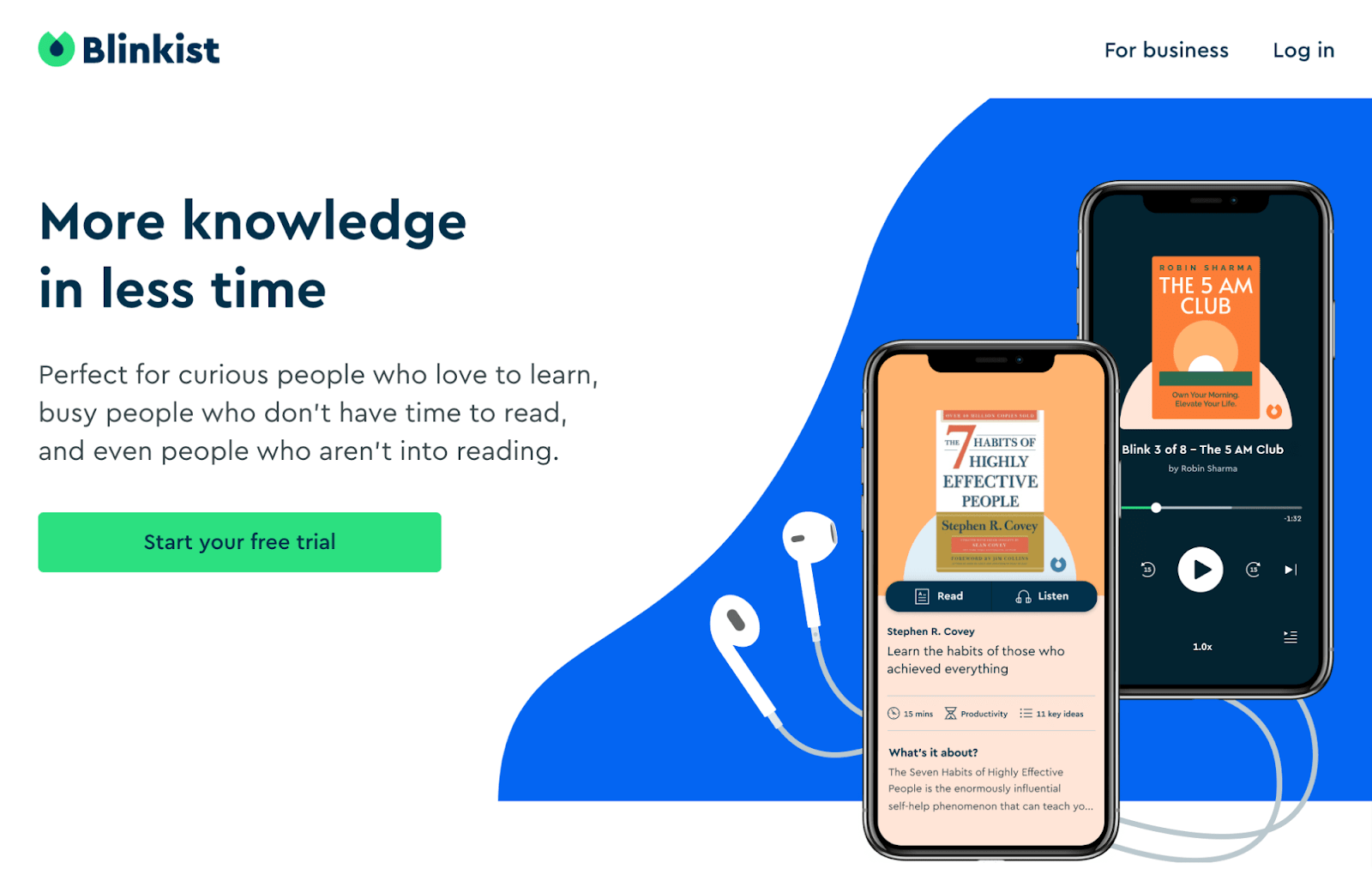
A cool takeaway from this example is how it surveys visitors before it lets them in. I mean, why wouldn’t someone “invest” one minute or even less to fill the survey and get something for free?
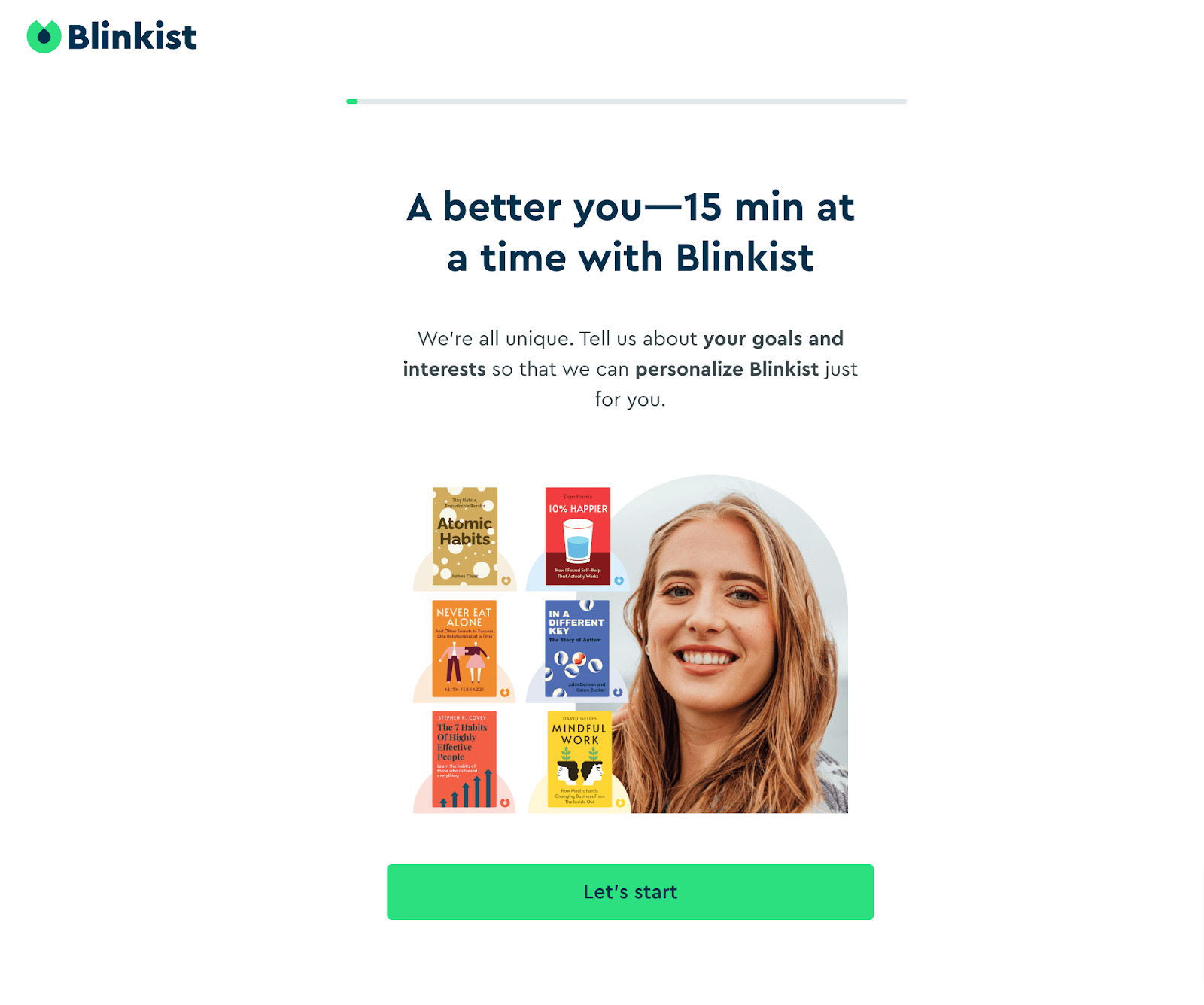
And below, we have its competitor, Soundview. You can’t get a trial period here. Only a sample of a book summary. Makes sense because one book summary should be enough to get a feel of the quality of Soundview’s product.

Why it works:
- The user can try your product before they buy it.
- While the user signs up for a free trial, you can offer them to sign up for a newsletter (or some kind of lead nurturing flow).
- The friction to your product is decreased.
- You can survey users during the onboarding to get market research data.
3. Early access/waiting lists
If you’ve got a product idea that just needs to see the light of day ASAP. If you want to launch it to a limited number of people before going big. If you want to get feedback from that small group of people before the entire internet sees it. Then consider launching your product with an early access lead magnet.
In this example, we’ve got Chip, the savings app. It launched its product with this kind of lead magnet. From the look of the website now, it must have worked out nicely for the company.

Why it works:
- You can build a list of potential customers even before launching your product.
- You can use your list to discuss product functionality. Early birds are often the savvy people within your niche.
- It allows you to ship fast to a small/controlled group.
4. Discounts and bonuses
Challenge #1: You want to give people an additional nudge to shop your brand. Challenge #2: You want to have a “direct line” for people interested in your product.
Offering a discount or a bonus in exchange for an email address solves both of those challenges simultaneously.
Quiksilver, the clothing brand, offers free shipping and free returns when people sign up for a free account. And it’s probably a win-win. I’m sure that free shipping and returns cost the company less than distributing its goods through other shops. Smart.
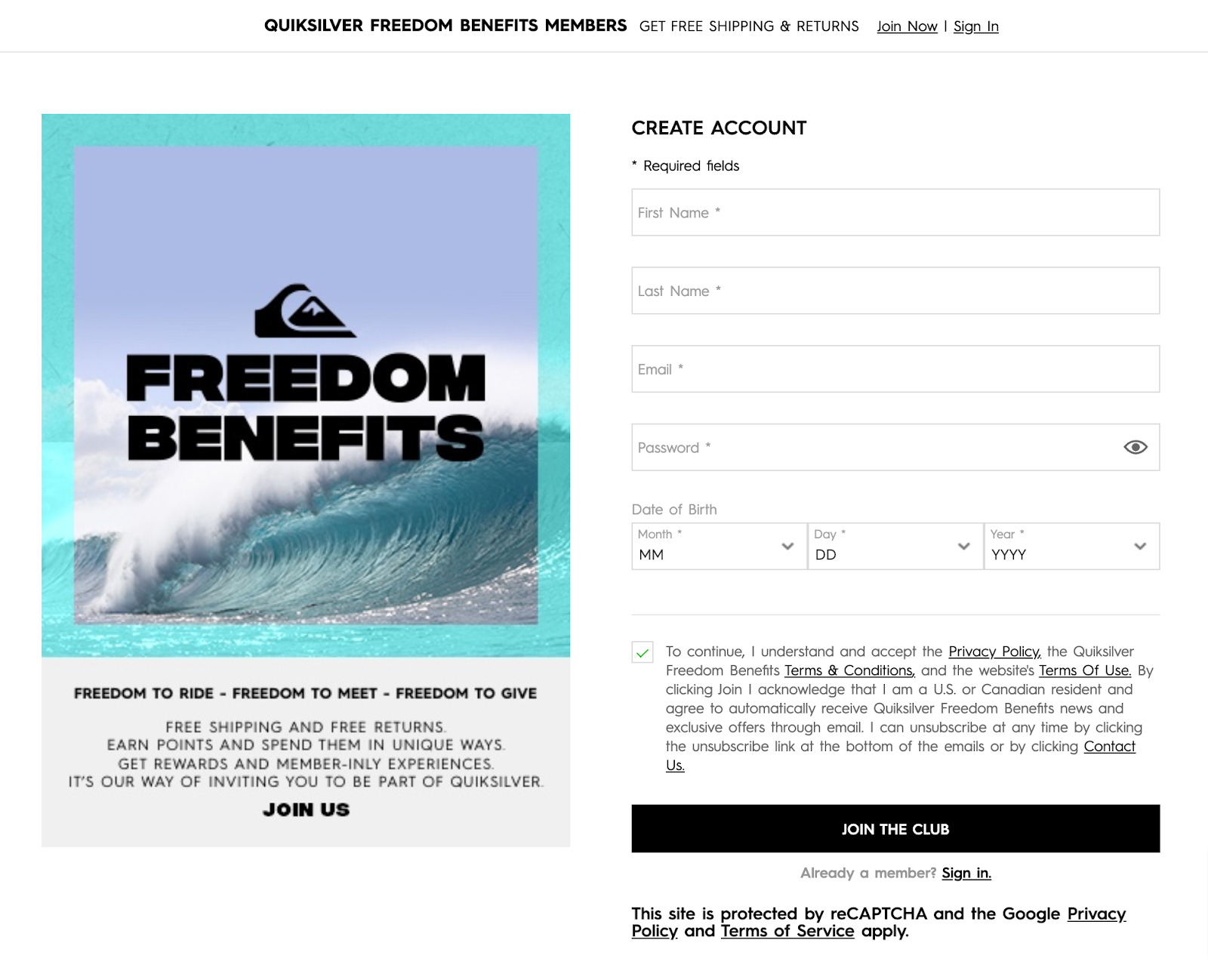
WAWWA, another clothing brand, offers 15% off your first order just to get your email address. I guess that tells a lot about the power of having a prospect’s email address.
I love how it promises you a lot of spam. Everybody promises not to spam, but it does the opposite. WAWWA will probably send you product deals, which you expect and is what the brand “warned” you about. Nobody can complain about that.
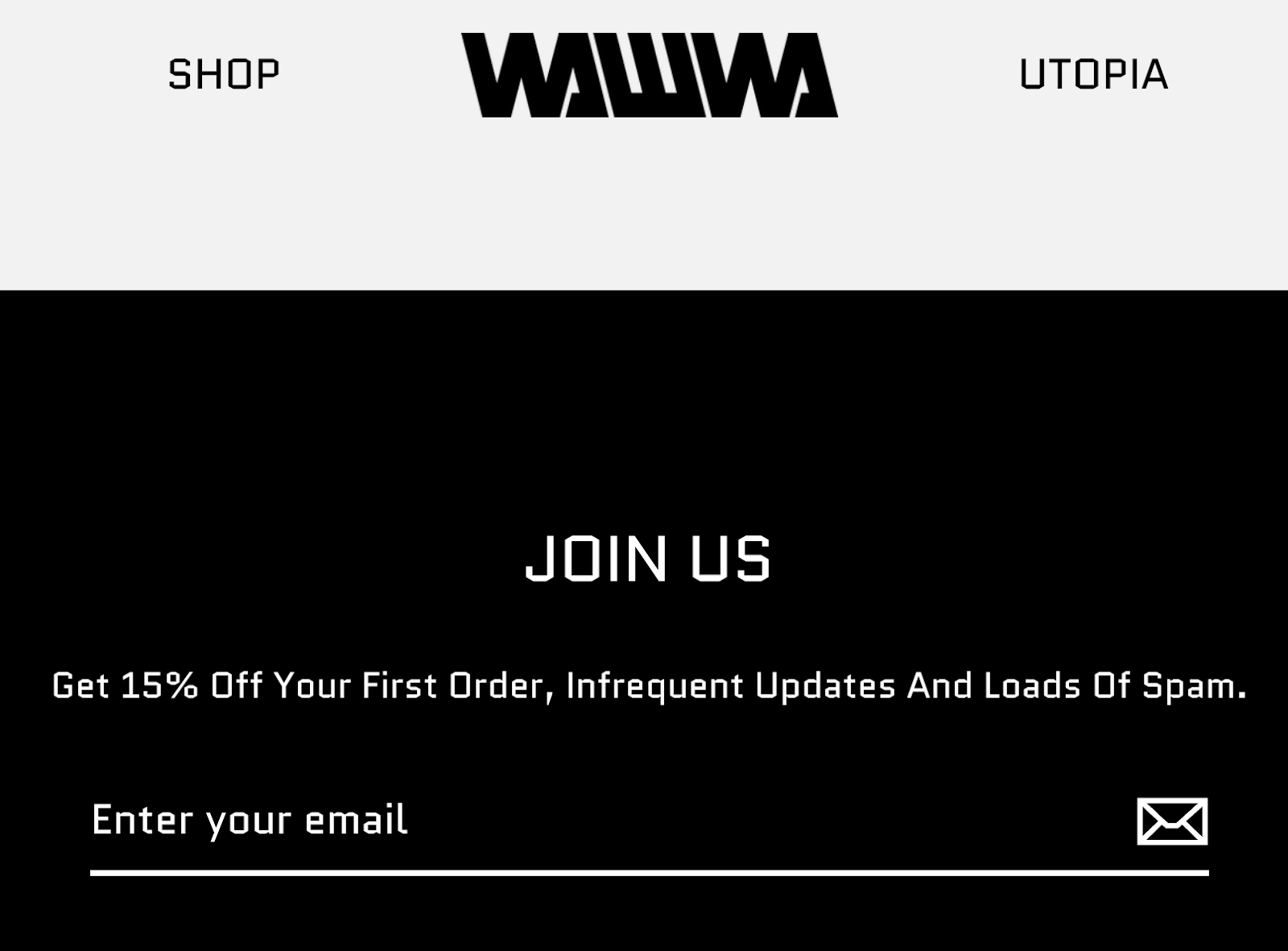
Why it works:
- People love discounts. Exchanging their email for a discount is quite a fair deal.
- Discounts can nudge your visitors toward making a purchase from you.
5. Sales materials and product demos
Self-service product trials can be ineffective when you’re dealing with a complex product. In those cases, a prospect is better off with some guidance rather than presented with a mosaic of buttons and dials. This is where guided product demos come in.
Depending on your target audience and market, you can also try other sales materials like comparisons, fact sheets, or third-party reports on your product.
Help Scout has figured out the best way for a newcomer to experience its product (and convert into a happy customer) is to simply learn what the product is all about in a 1:1 demo.
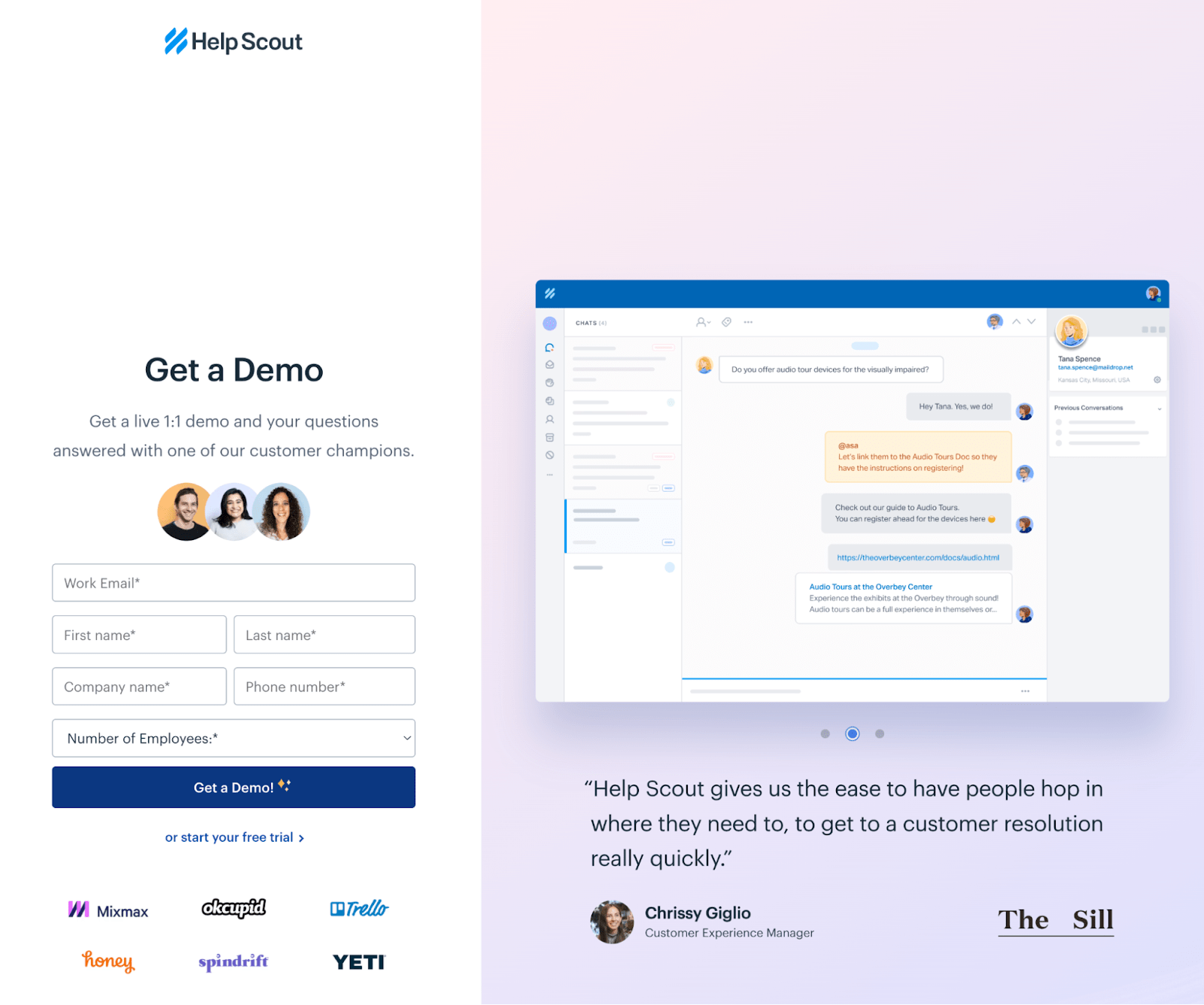
An interesting solution when it comes to demos is to have a chatbot prequalify the lead and schedule an appointment with them and your sales team. This example is from Metadata.io.

Why it works:
- People who sign up for product demos are usually considering the offer quite seriously.
- You can get in direct contact with the lead: answer questions, fight objections, or even show how your features shine.
- This is a subtle but effective solution if you’re not comfortable with sharing details about your product on the open internet.
- This is a common practice to attract enterprise customers, who usually have high requirements and specific needs.
6. Expert advice/free assessments
Getting a free assessment or advice from an expert for the “cost” of filling out a contact form seems like a great solution for all kinds of agencies and service providers.
In this example, agency Single Grain offers a free, custom marketing plan. No better “foot in the door” for a marketing agency than this.
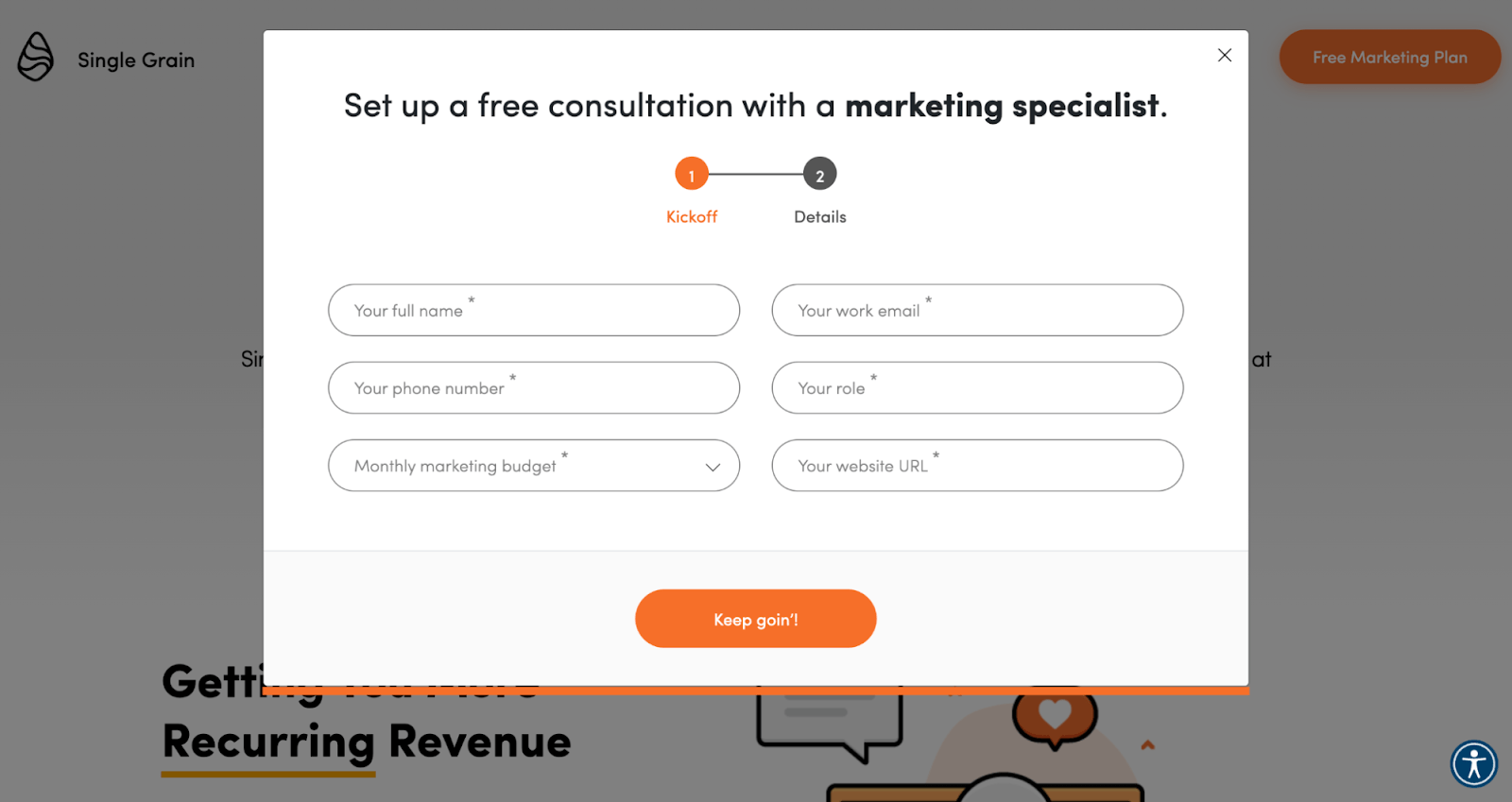
Why it works:
- Get in direct contact with your audience and personalize your message
- Allows you to get your “foot in the door”
- Potential to create the reciprocity effect
7. Courses
This example from Qlik covers all bases about courses as lead magnets:
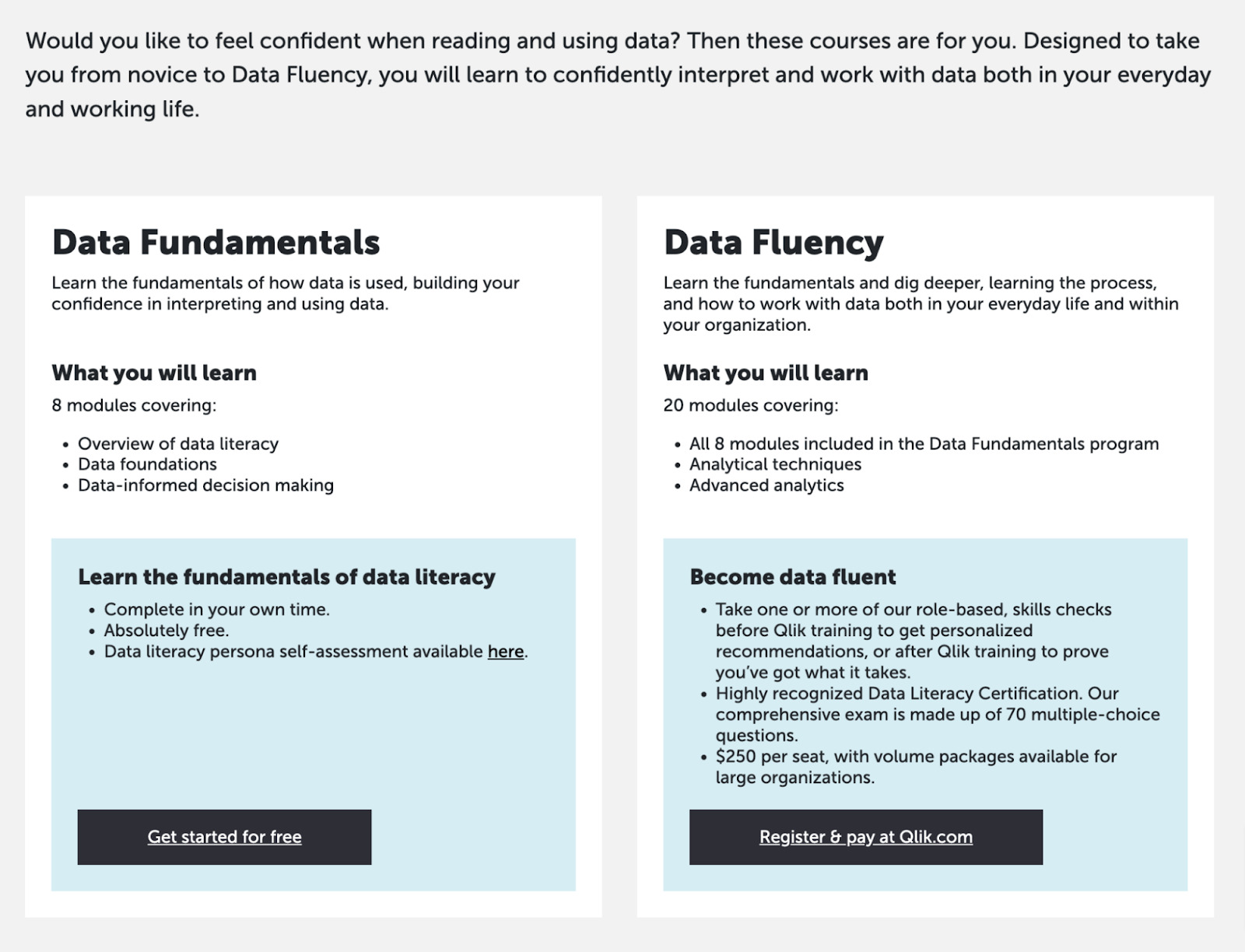
- Search queries related to data literacy lead to free courses on the platform
- Free courses lead to assessments and paid courses
- Assessments and paid courses lead to submitting contact information
Reading the list from points #1 to #3 gives you the user’s perspective. Reading it from points #3 to #1 shows you the company’s perspective. I think Qlik discovered that the more people know about the role of data in business, the more customers it can have.
Why it works:
- Courses are considered premium assets.
- You can educate your audience over a longer period.
- Courses are a great source of organic traffic.
8. White papers
A white paper is somewhere between a B2B sales pitch and an academic paper. It aims to be a serious document showing the necessary data and facts to explain why the issuer’s solution is the best on the market—or at least one of the best.
In this example, Ultimaker (a 3D printer manufacturer) gathers contact information from an audience interested in the real cost of owning a 3D printer. Naturally, one of its products is used as an example here.
I think it’s doing a good job because a) you read about its printer, but it doesn’t feel like product placement, and b) it’s true that other manufacturers don’t always communicate the full cost of owning a 3D printer.

Why it works:
- You can save your most in-depth, expert content for your most qualified audience.
- This is a good way to show your expertise.
- You can use this opportunity to customize your content for specific market segments.
9. Ebooks
Some problems are just too broad to tackle with one blog article. That’s where ebooks come in.
Ebooks are some of the most irresistible lead magnets because they offer free education on complex, professional topics that you’ll find hard to get anywhere else.
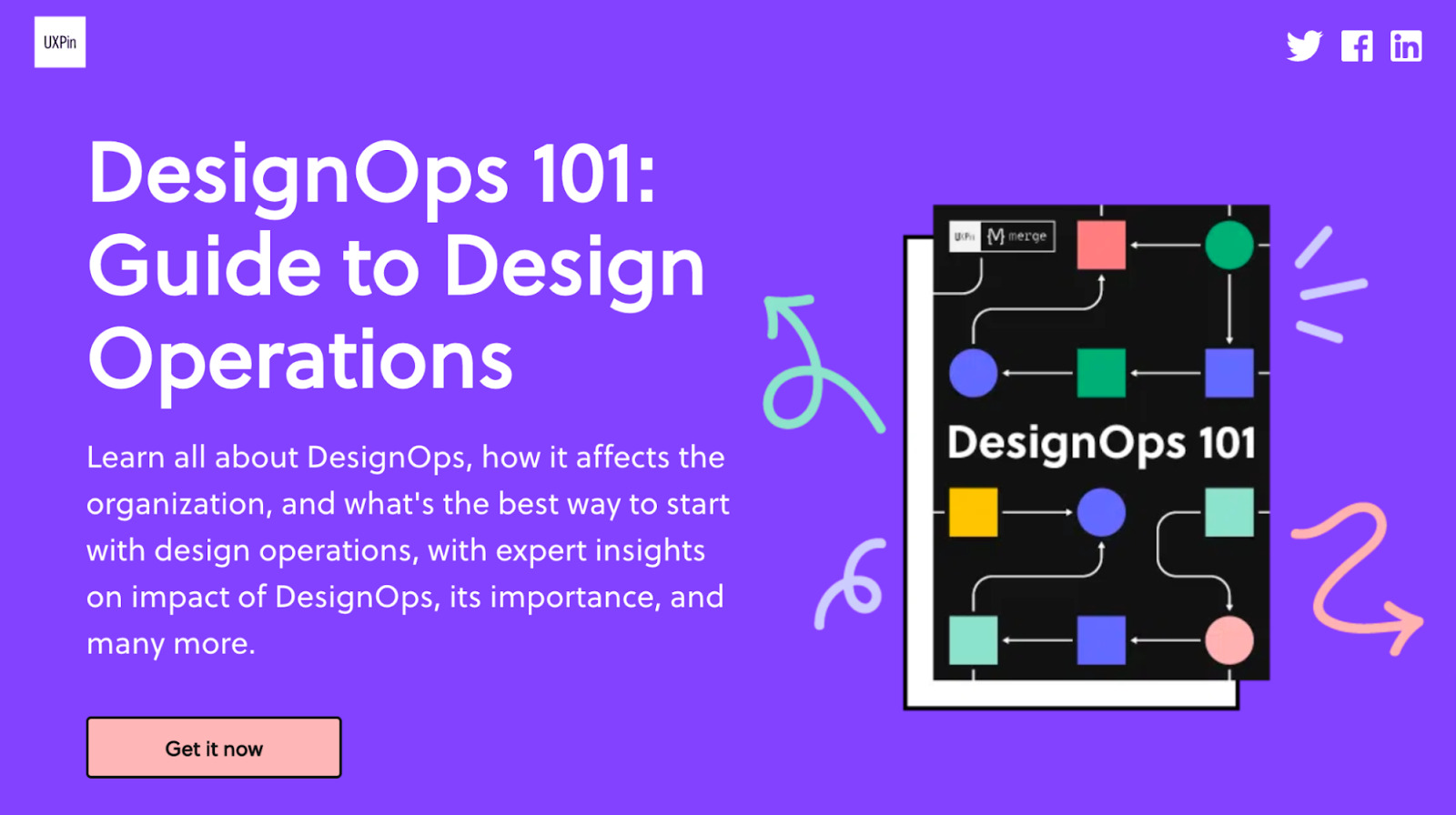
Why it works:
- Ebooks attract people who are interested in learning more about your niche. They are likely good candidates in lead nurturing campaigns.
- Ebooks are considered premium content.
- Ebooks can be a part of a larger content distribution program. They can even be made with repurposed content.
- This is a rare opportunity to get someone’s attention for more than five minutes.
10. Webinars/virtual summits
When everyone else is blogging and publishing ebooks, you can stand out from the crowd with webinars and virtual summits.
A webinar is especially effective (i.e., better than your competitor’s educational materials) if the topic is better shown than told.

Why it works:
- Attracts industry professionals
- Doesn’t always require you to create content—the speakers can do that
- Brings invited guests, especially those who are influencers in your industry, closer to your brand
- Live sessions let you communicate with audience
- Can be recorded and used as evergreen content
11. Reports
Serious people will take you more seriously when you show them how serious you are. And an industry report is one of the most “serious” types of content that you can produce.
Reports are usually collated after hundreds of professionals are surveyed. These professionals are often, if not always, the issuer’s customers. Only then can the report be something truly new and unique. So this is not something every company can put together.
But when you do manage to put something like this together, it speaks volumes about the scale of your operation.
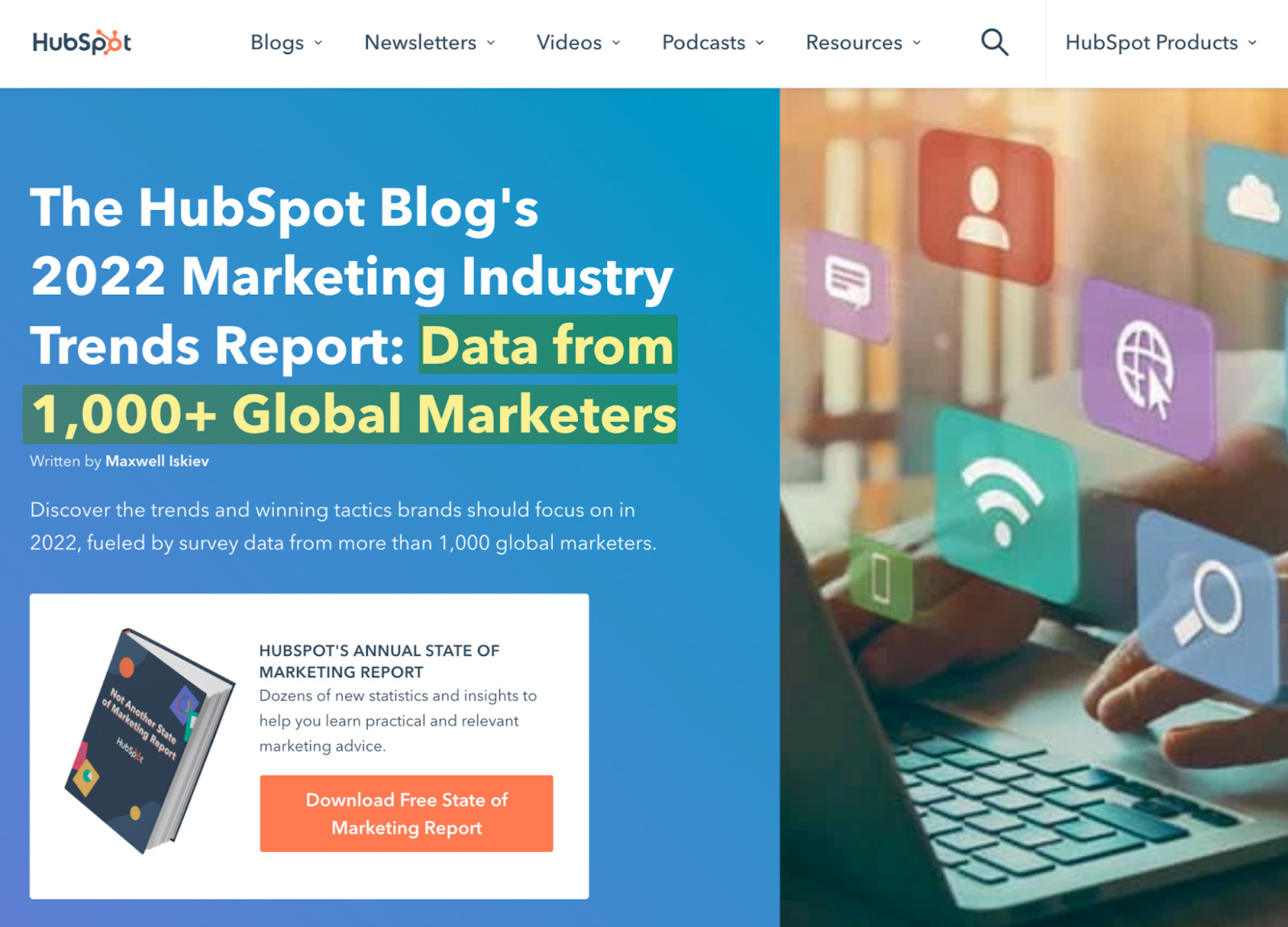
An additional bonus of getting leads is that reports tend to naturally earn backlinks, which is one of the most important success factors in SEO.
Why it works:
- Reports are considered premium content.
- Reports can be great linkbait.
- On top of acquiring leads, you can additionally gain brand awareness if your reports get cited online.
- Reports usually attract industry professionals. And press too.
12. Newsletters
This form of lead magnets doesn’t need an introduction. You can find it all over the web.
Some of those newsletters are just that—a content digest regularly delivered to one’s inbox.

And some are a gateway to a lead nurturing program. It’s common to see companies pitching their products or special deals in between the regular news.
Why it works:
- Great way to remain in regular contact with your audience
- Allows you to distribute any kind of content, e.g., educational materials, discounts, special announcements, etc
- Good entry point of marketing automation programs
13. Calculators
But not the regular type of calculator. I’m talking about calculators that are meant for purposes specific to a given problem: ROI calculators, financial calculators, statistical significance calculators, and so on.
They are a brilliant way to lure in B2B prospects because a lot of decisions in business need to add up. But they can also work for B2C, e.g., mortgage calculators.
A “lead magnet” calculator can be directly related to your product, but it doesn’t have to be. It can be about something that your audience cares about. A good example is this customer support hiring calculator from Help Scout:

14. Cheat sheets and checklists
If your target audience members are involved in repetitive work, they will need to go over the same steps multiple times as they carry out their tasks.
Cheat sheets and checklists help make this work easier to complete and preserve sanity. You don’t have to look up the same small bits of information or remember all the details that can make or break a complex process.
No wonder developers love cheat sheets. Here’s an example collection of cheat sheets from Opensource.com. Each one is a lead magnet.
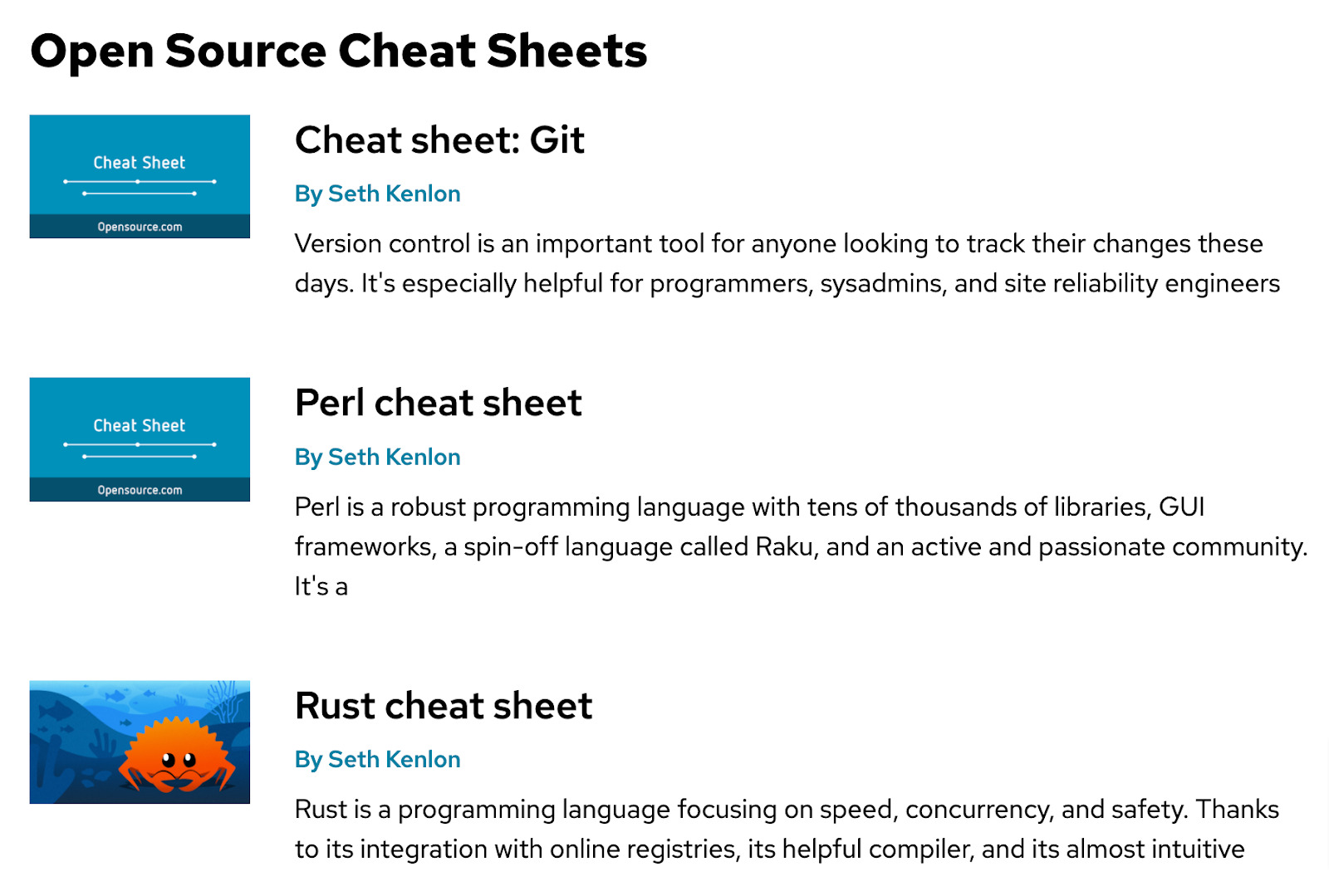
Creating a press release can be stressful. You need to work with different stakeholders, get everything absolutely right, and sound interesting to the press at the same time. A “press release checklist” lead magnet is hard to resist.
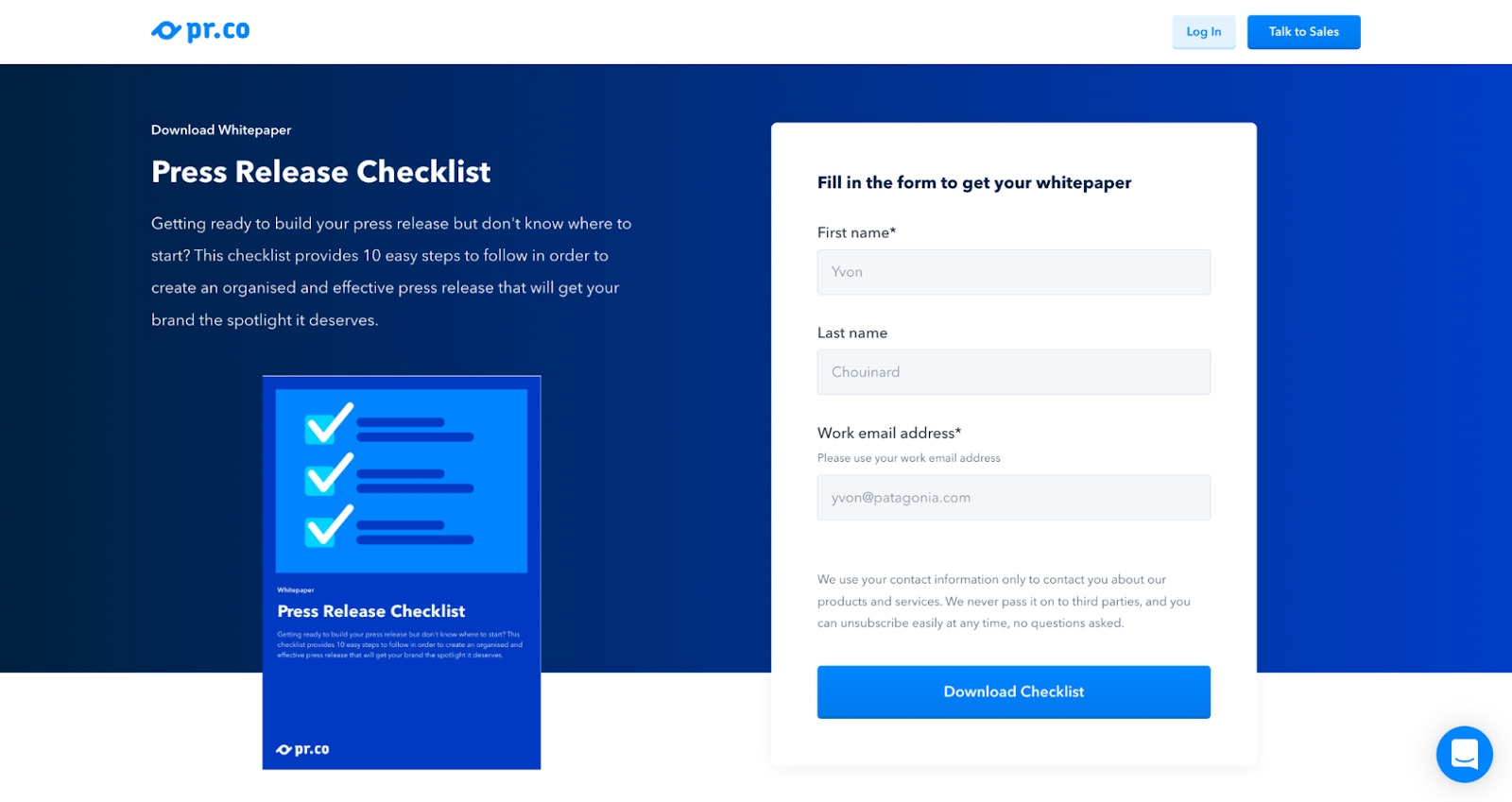
Why it works:
- Great way to attract an audience at the top of the funnel
- Often shared
- Likely to be used multiple times, equating to multiple opportunities for people to remember your brand
- Highly practical: saves people time and unnecessary mistakes, offering positive emotional potential that can be associated with your brand
15. Templates
Along with ebooks and newsletters, they are one of the most popular ways to get someone’s contact information.
There’s nothing wrong with using a template at work. A lot of people do that. If they’re not using somebody else’s template, they’re using their own. Templates allow professionals to keep the quality of their work consistent without needing to go over the same problem multiple times.
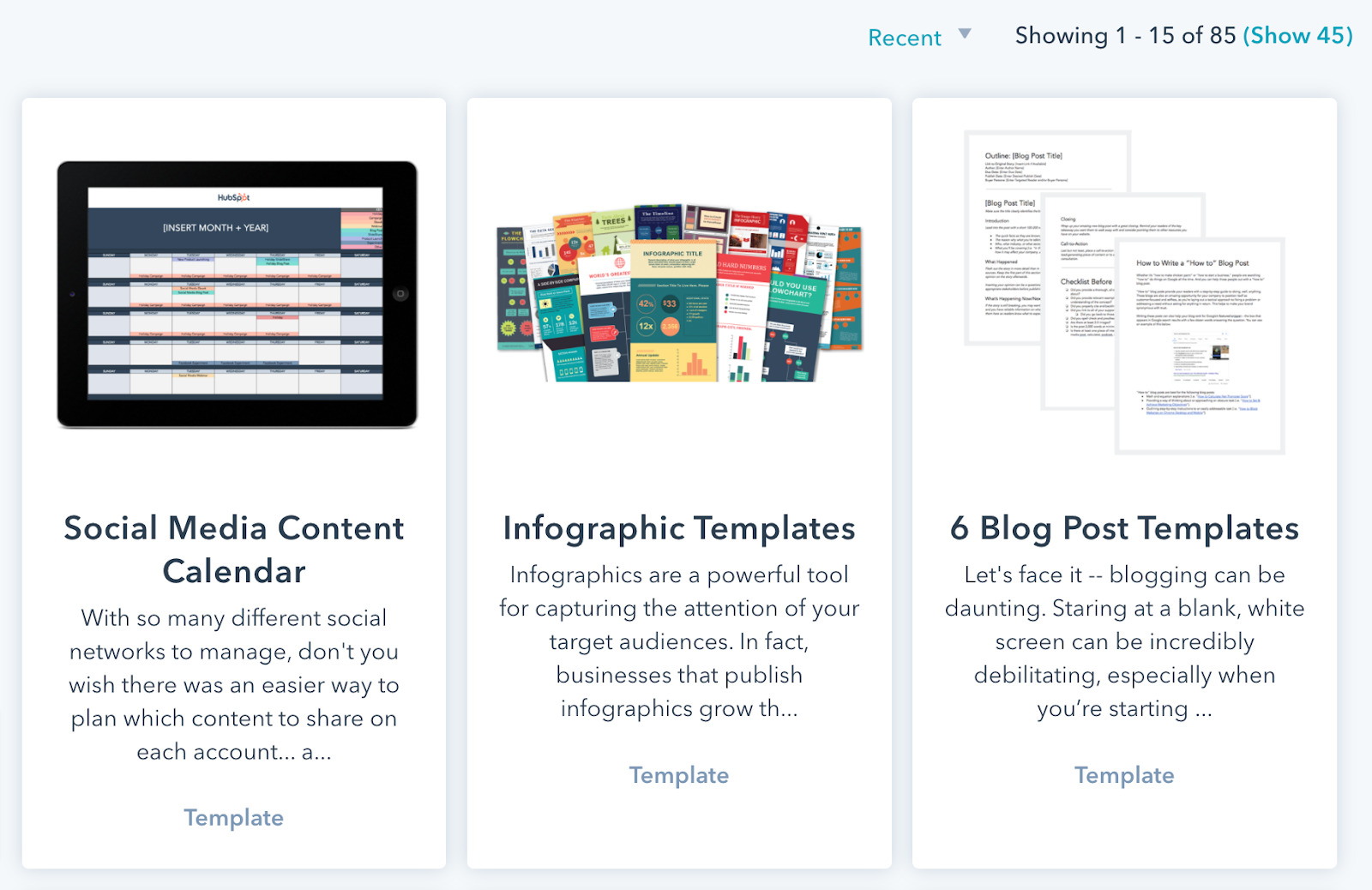
Probably no other company publishes more templates than HubSpot. You can find over 85 marketing templates here.
Why it works:
- Templates are a practical tool likely used multiple times. This means multiple opportunities for brand exposure.
- Templates can be great linkbait.
- Adding a template to a blog article can increase your chances of ranking on search engines (if that aligns with the search intent of the query).
16. Swipe files
Looking for inspiration is probably one of the most common reasons to go online. And there’s a special lead magnet for that as well.
Here, we’ve got Webprofits’ swipe file of handpicked landing page examples from 73 high-growth companies.

Why it works:
- Great for helping people looking for inspiration
- Allows the reader to save time on separating the wheat from the chaff, as swipe files are carefully curated ideas
17. Contests, quizzes, and giveaways
Getting a lead from a lead magnet that promises a prize is the easy part. The hard part is to convert that lead later on because you can attract leads not interested in your product (if the prize is something different from your product).
One way is to try and get their attention while they wait for the winner’s announcement. Another way is to try and point them to your product through a drip campaign after the whole event.
Here’s an interesting example. It combines a quiz and a contest. First, the visitor completes a personality quiz to reveal their perfect home decor style. Next, they can enter the contest to win furniture in that exact style. You can read the full case study here.
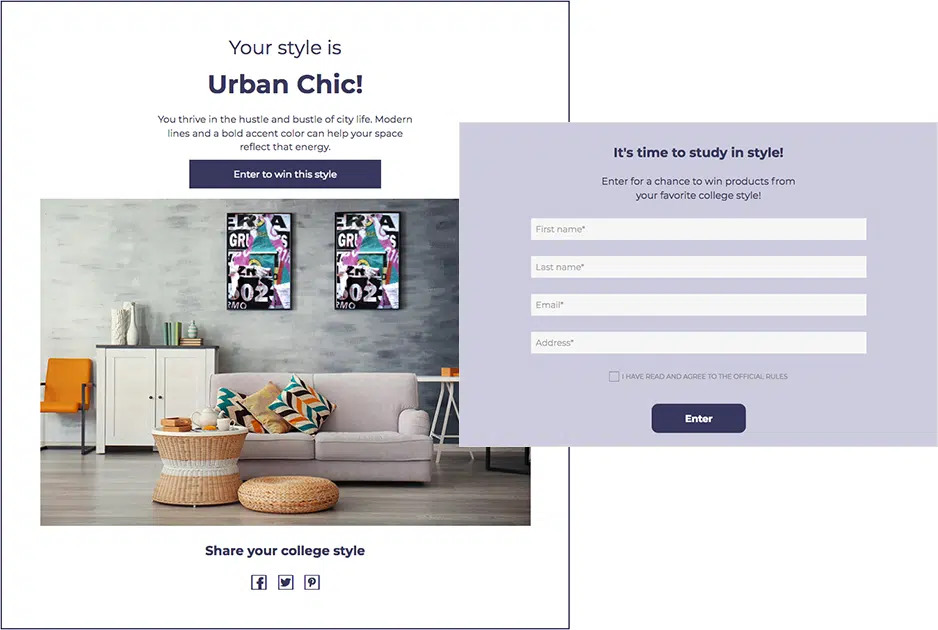
Why it works:
- You don’t have to create any special content. You just need to have the budget to sponsor the prize.
- This is great for the top of the funnel, as the contest itself can drive awareness of your brand. You don’t have to do anything special other than sponsoring a truly attractive prize.
What should your lead magnets be about? Let’s explore a few ideas on how you can answer that question.
Do keyword research
Keyword research is the process of understanding the language your target customers use when searching for your products, services, and content. It then involves analyzing, comparing, and prioritizing the best keyword opportunities for your website.
To start your keyword research, you need two things: a keyword research tool like Ahrefs’ Keywords Explorer and some seed keywords.
One way to find your seed keywords is to look at your existing, top-performing content. If you don’t have any content yet or want to skip your existing content for some reason, you can use words or phrases that you think should be interesting to your target audience.
For example, our best-performing articles are on the topic of SEO. And we know that we want to attract even more people interested in SEO to our website. So creating a lead magnet for something SEO-related is a sound idea for us.
So here’s what you do once you’ve identified your seed keywords. Plug in the seed keyword, e.g., “seo,” and limit the results to some popular lead magnet types. You can then prioritize those ideas based on provided SEO metrics, such as search volume or traffic potential.
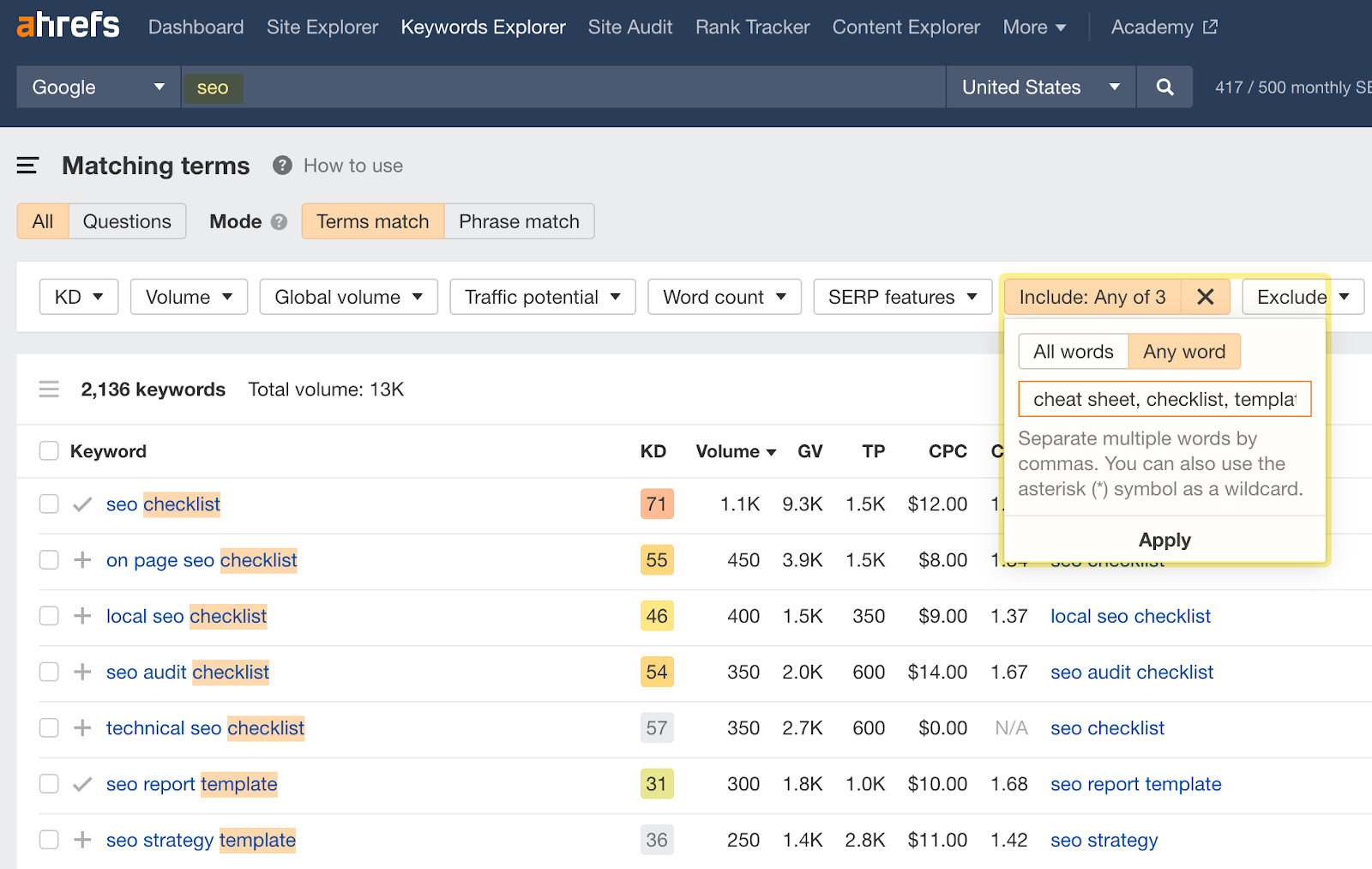
Keywords Explorer found over 2K potential topics on lead magnets, including the seed keyword “seo” and one of three popular lead magnets.
Once you understand what content can bring organic traffic and/or is likely to generate engagement, you can create lead magnets based on those topics.
Analyze competitors
You can browse through your competitors’ websites to get clues on topics for lead magnets.
You can look for topic patterns on their blogs. Or look for content that a competitor promotes by visiting their homepage, for example.
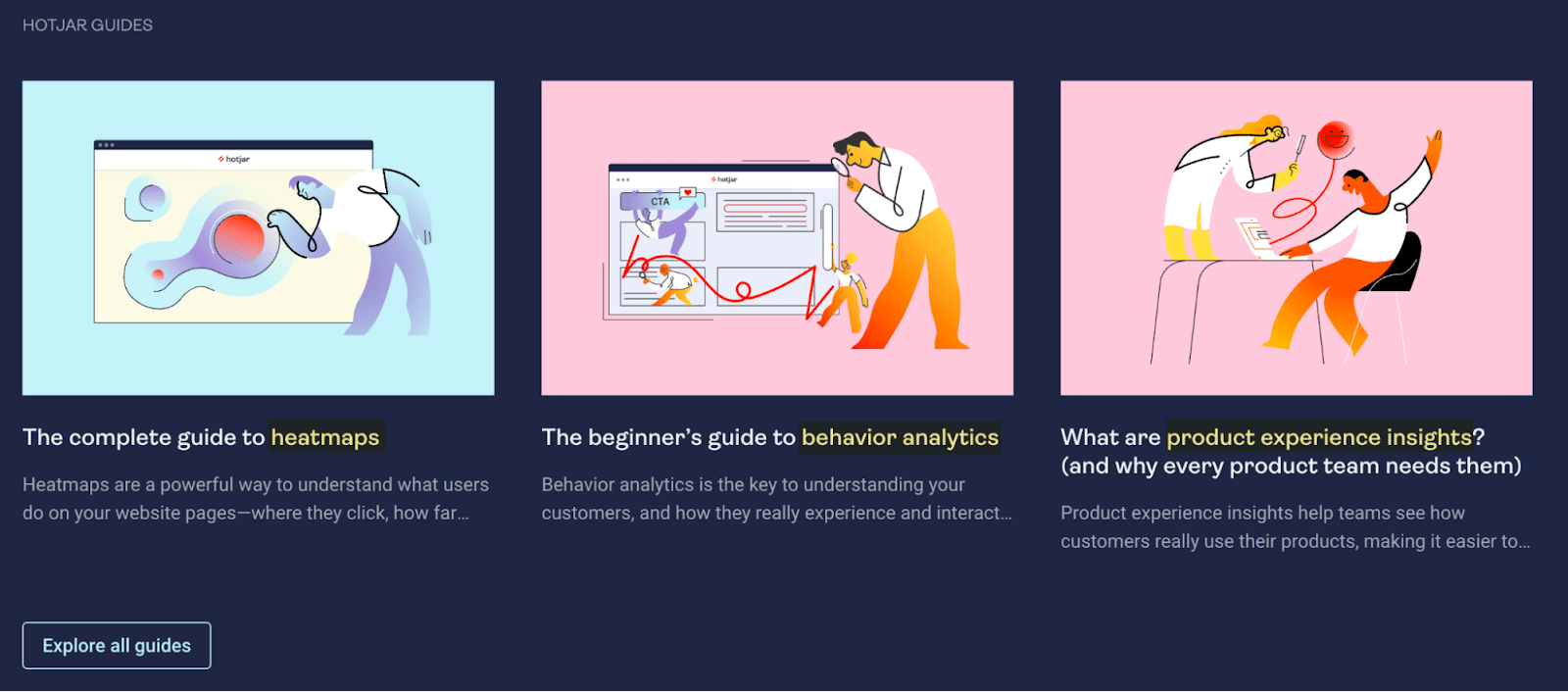
An even more effective way to analyze your competitors is to find your competitors’ top-performing content. Here’s how Ahrefs can help with that.
First, you can check who creates content similar to yours. To do that, plug in your website in Ahrefs’ Site Explorer and go to the Competing Domains report:
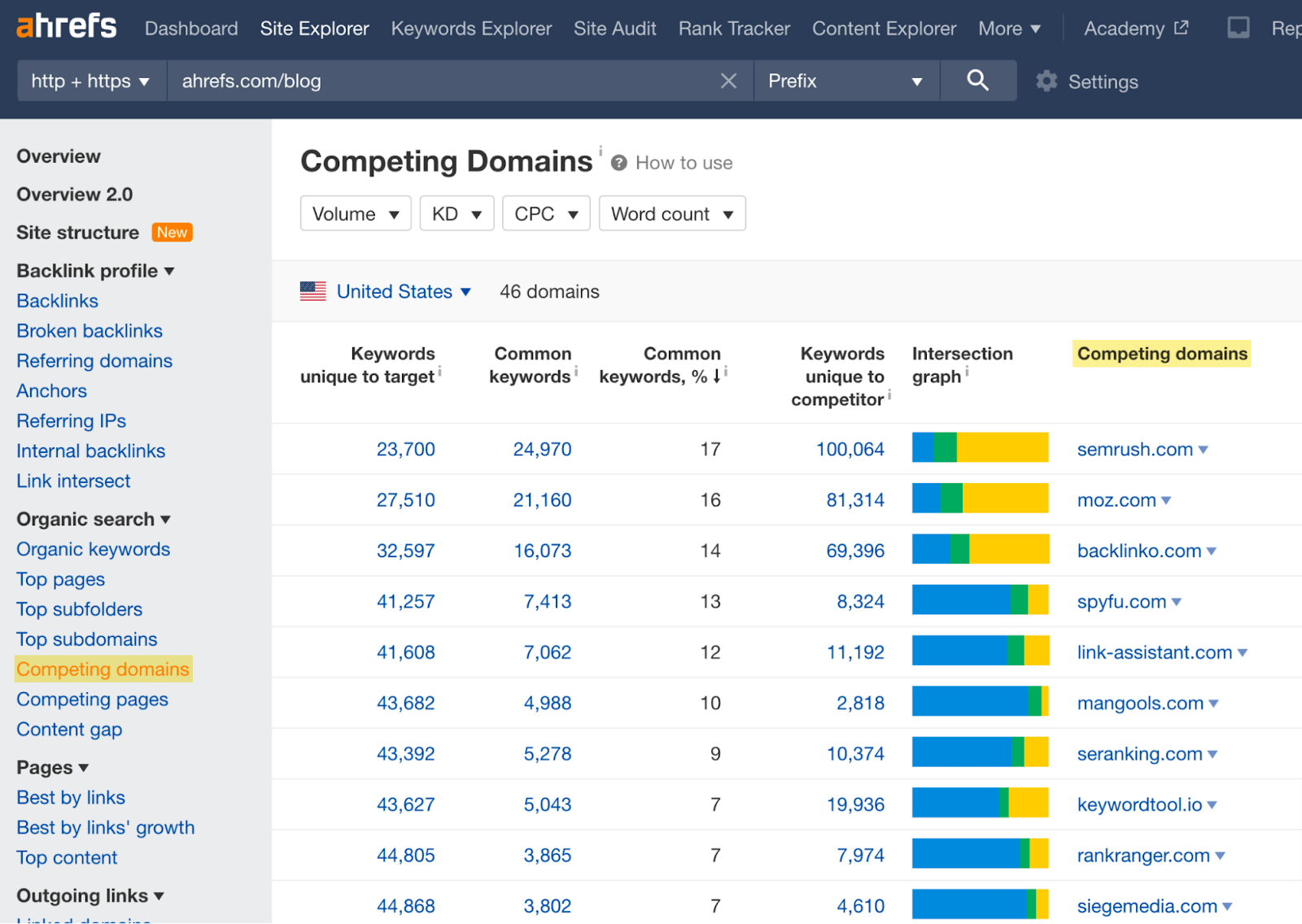
Next, there are two reports that can help you reveal the best content published on those domains.
The Top pages report allows you to discover pages based on the amount of organic traffic they bring. You can even filter those results for types of linkbait.

Another report, Top Content, reveals the best-performing content in terms of engagement: referring domains (from links to that content), Twitter shares, and Pinterest shares.
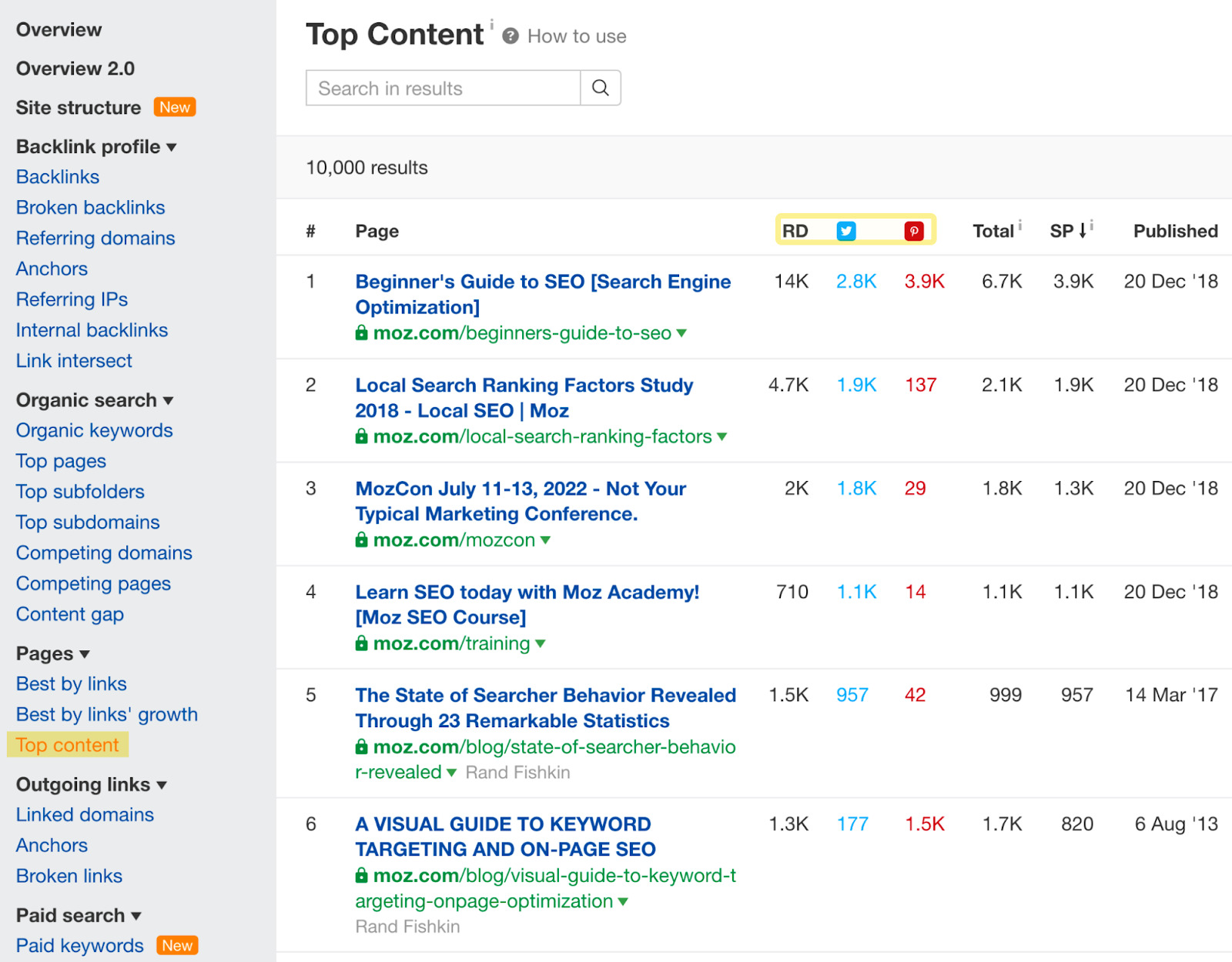
If you want to get an even bigger picture of the content that has been created for a given topic, you can use Ahrefs’ Content Explorer.
For example, if we wanted to look for the topic of SEO but see only lead magnets, we could plug in our seed keyword with some search operators…
seo (template OR "cheat sheet" OR checklist OR webinar)
… to get hundreds of results that we could analyze based on their performance (traffic, Twitter shares, etc.).

Study your niche
Another proven way of finding topics for your lead magnets is paying attention to what other people say in places where your industry and/or your target audience hangs out. Think groups on social media, magazines, personal blogs, and communities.
This way, you can find topics with a lot of engagement and/or topics that are currently trending. This will allow you to react to opportunities faster than your competitors. On top of that, you can potentially get valuable insights from conversations on those topics.
For example, Google Analytics 4 (GA4) became a hot topic once again when news of sunsetting the old GA came out.
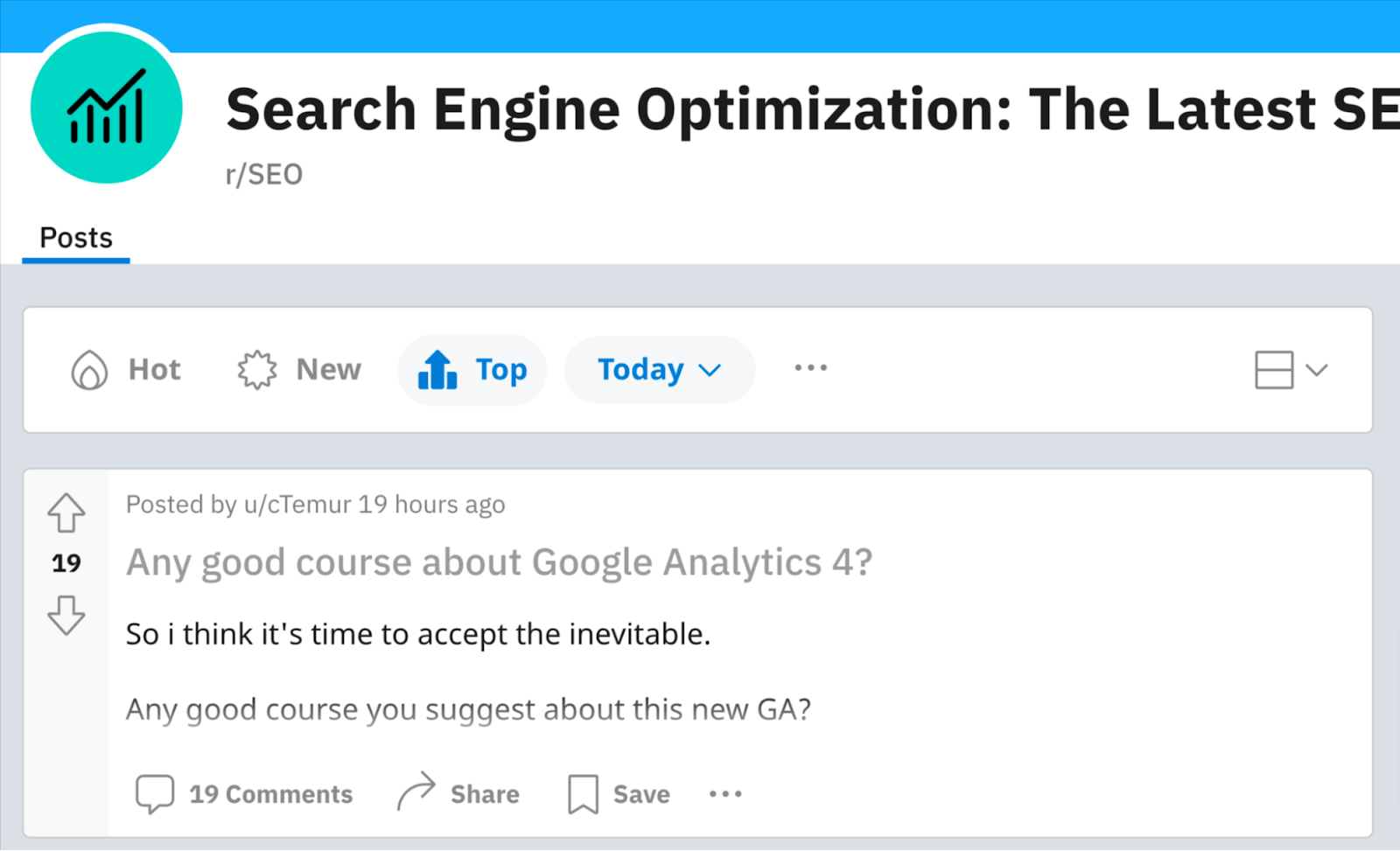
You can then use a keyword research tool and see the search demand and how difficult it will be to rank a course lead magnet on the topic of GA4.
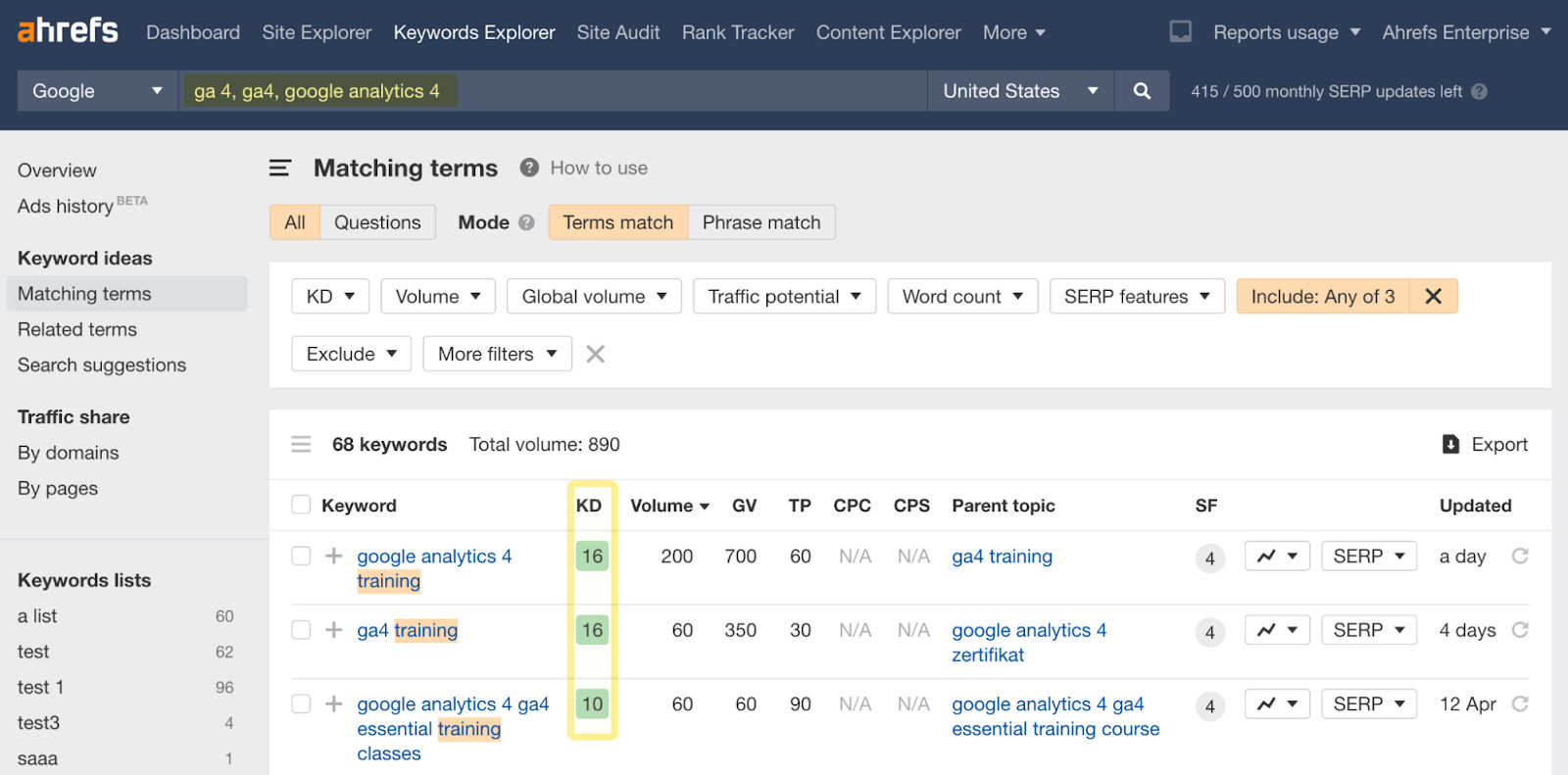
Keyword Difficulty (KD) below 20. Looks like this kind of lead magnet is still something relatively easy to rank for. For now.
You can also try an audience research tool like SparkToro. Just plug in topics your target audience frequently talks about to discover related topics and hashtags (among many other things).
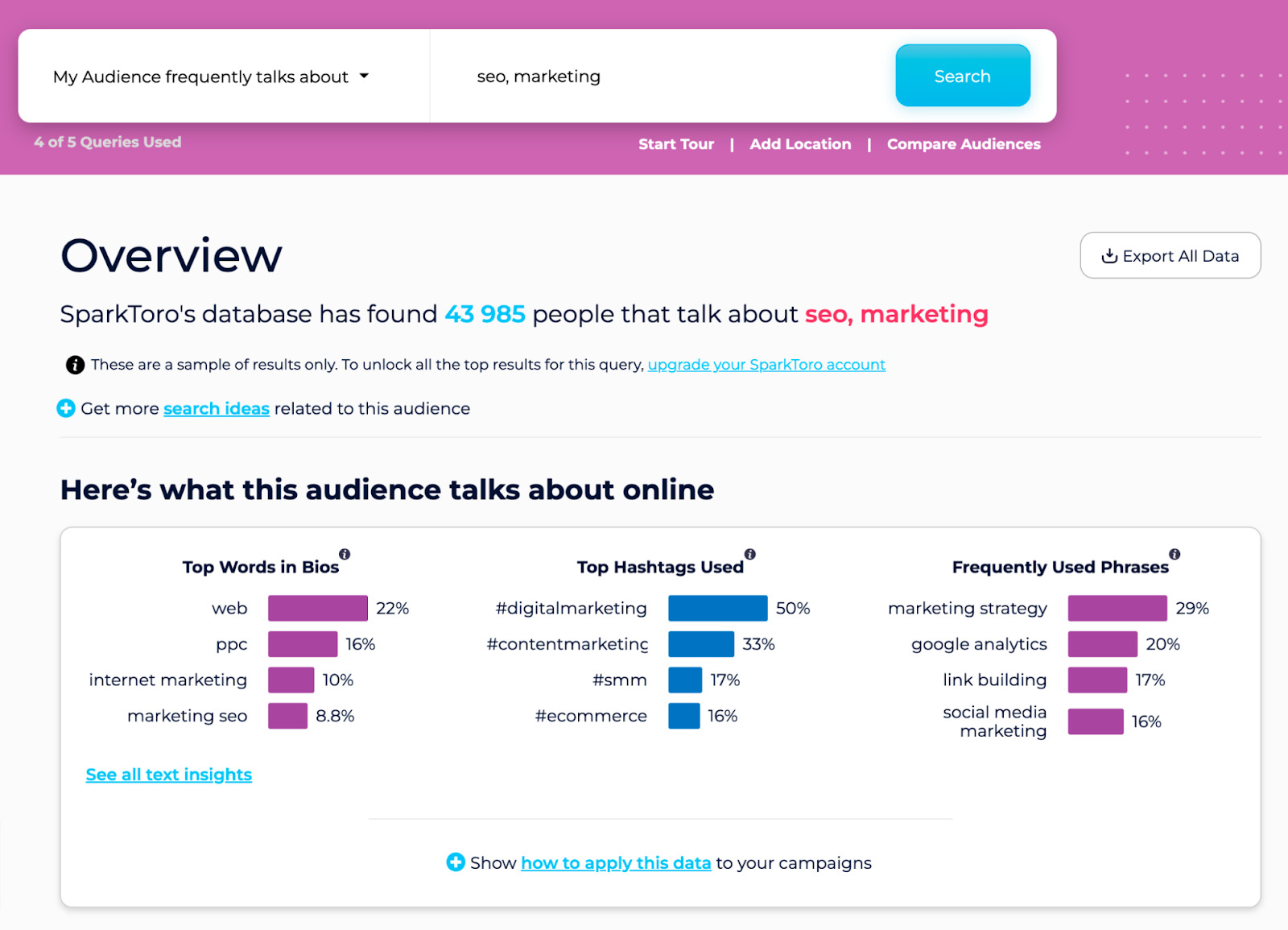
Lead magnets are useless when they get no traffic. Let’s see how we can get that piece of the lead-capturing mechanism to work.
Drive traffic with relevant blog posts
Look at the example below. Here, we’ve got HubSpot actually writing blog posts about its lead magnets.
This way, it can maximize its chances of driving organic traffic from search queries related to those lead magnets. And the results are impressive, given this is consistent traffic that’s basically free:
But it doesn’t have to be just one blog post per lead magnet. You can link to your templates from multiple blog posts. This is what UXPin does with its impressive library of free ebooks.

Whenever it blogs about a subject related to one of the books, it can link to the book. On top of that, it can simply promote the latest ebooks in the site navigation of the blog. By doing this, its books received over 6K links pointing visitors from the blog to those lead magnets:

Create an SEO-friendly landing page
Creating an SEO-friendly page means a number of things (more about that later). But first and foremost, it’s about the search intent, aka the reason behind the query.
Basically, it boils down to following the same format, type, and angle of the content (or as we call it, the three Cs of search intent) that you can find within the top 10 ranking pages for a given search query.
So for HubSpot’s templates shown in the section above, the best way to drive organic traffic is through a blog post because that’s what people seem to expect based on the SERPs.
But for calculator lead magnets, oftentimes the best way to go is with a landing page that links directly to the tool or features the tool on the page. Below are two examples of that with some impressive organic traffic results.
The first one is from Confused.com.

You won’t get a quote until you submit the contact data. At this point, it doesn’t allow you to opt out of “newsletters and relevant content.”

This landing page that links to the calculator gets over 113K monthly organic visits without any ad spend.
And here’s the second example. The calculator is featured directly on the landing page. What’s more is it allows visitors to get the result without submitting any information. Thoughtful. But who wouldn’t want free guidance on how to get a better house?

This calculator ranks #1 in the U.S. for the query “how much house can i afford” and gets an estimated 341K monthly visits from search engines. That’s a lot of free traffic.

A competing lead magnet from Zillow does the same thing: The calculation is open to all. But that crucial next step—learning how much you can borrow to get your house—will require some personal information.
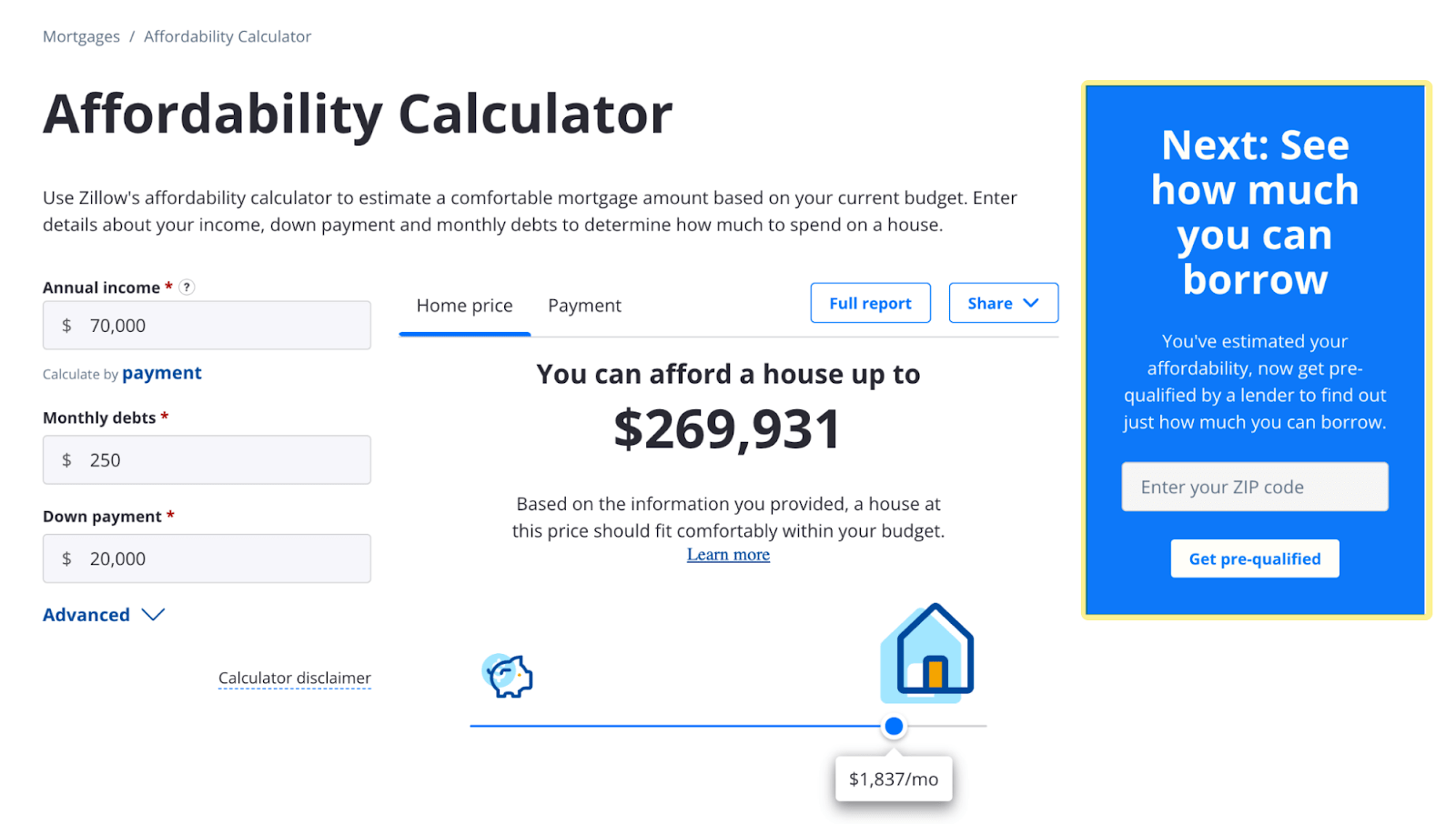
The landing pages from NerdWallet and Zillow have one more interesting SEO tactic. Right below the calculators, they answer frequently asked questions about financing a house.
This way, they send a strong signal to Google about the context of the page. Also, they can rank for related long-tail keywords, such as “how much should i spend on a house.”
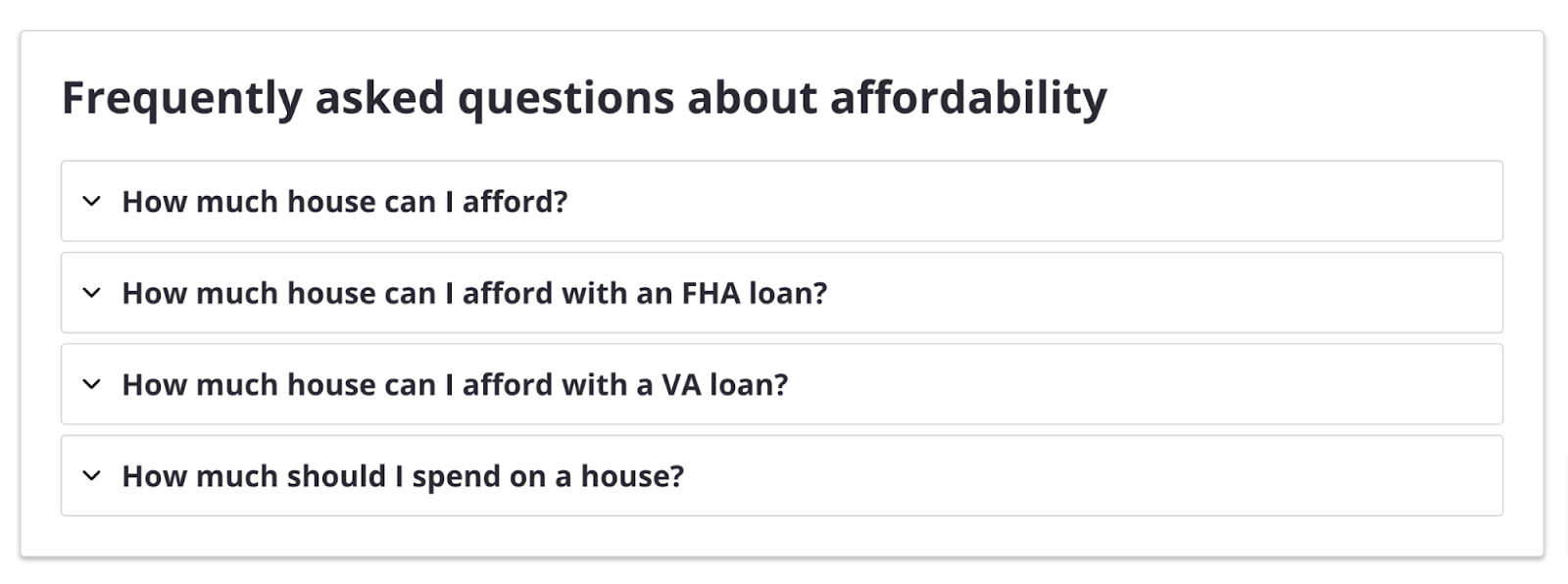
You can learn more about SEO-friendly landing pages here:
Promote on your high-traffic pages
Your lead magnets can piggyback on other pages’ traffic. All you need to do is identify your high-traffic pages and find a spot where it makes sense to promote your lead magnet.
For example, Zendesk promotes its lead-capturing assets on the homepage—right below the main header:

Adobe Marketo goes as far as making its product tour lead magnet the focal point of the homepage:
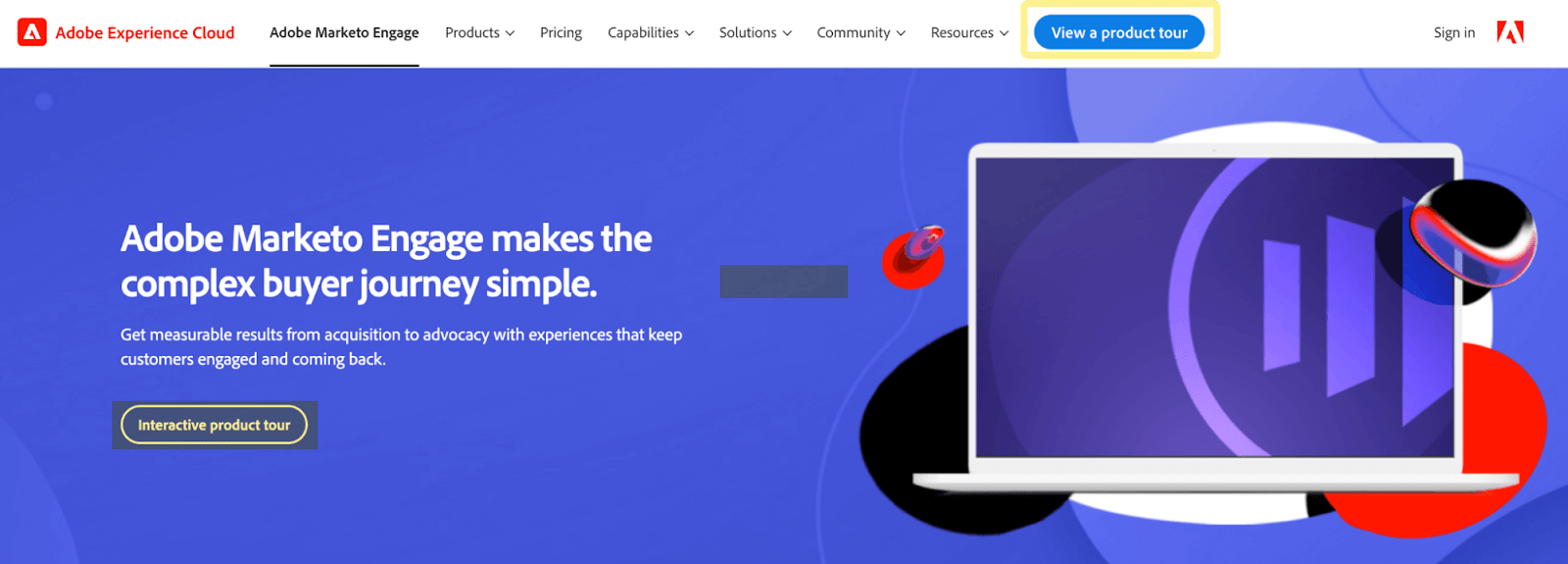
Promote via email
Why send a lead magnet to a person whose email address you already have? Here are some good reasons. You can:
- Get information from that lead (for lead scoring). For instance, you may have captured a lead with a simple newsletter lead capture form. But your new lead magnet, which offers something premium, can require the lead to submit more information.
- Keep your leads engaged with your brand.
- Use the lead magnet to re-engage old leads.

By sending a lead magnet on the topic of design ops, UXPin can better segment its newsletter subscribers.
Share on social media and in communities
Here are two things you may want to consider when sharing lead magnets on social media.
First, don’t rely too much on traffic from social media when it comes to this kind of content. Sure, your content stands the chance of becoming viral, but organic reach on social media has been declining for quite some time now.
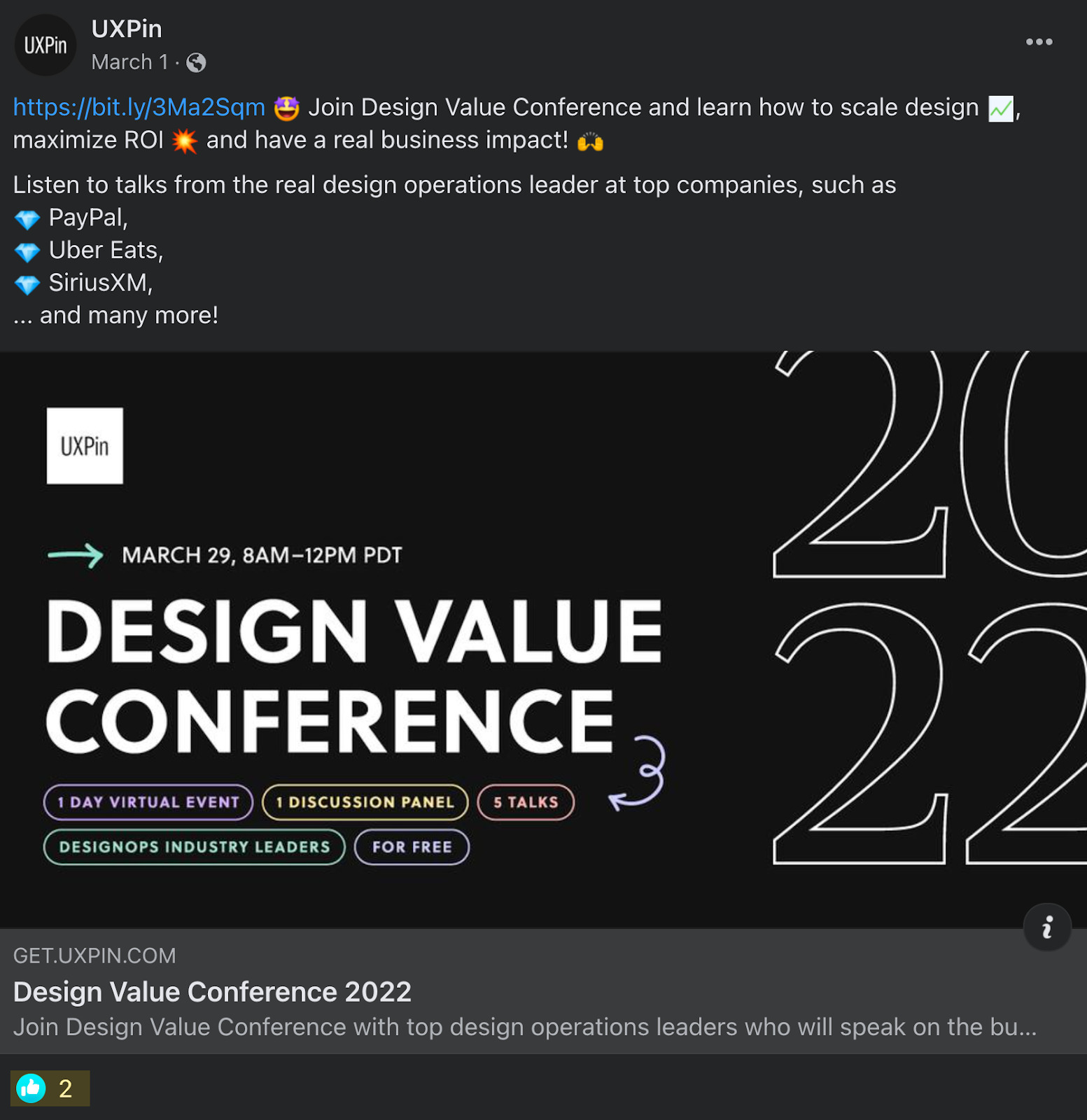
UXPin only got two likes when it first announced its online conference. And it has over 145K fans. Quo vadis, Facebook?
Second, not all social media platforms will be suitable for your content. For example, Deloitte’s webinar on “Cloud Core Banking Academy” seems like a better fit for professional network platform LinkedIn (rather than Facebook).
Another example, Asana’s Anatomy of Work report, earned 10 likes on Facebook (276K followers) and over 10 times more on LinkedIn (168K followers). But either way, this result seems quite low for all the effort put into this content.
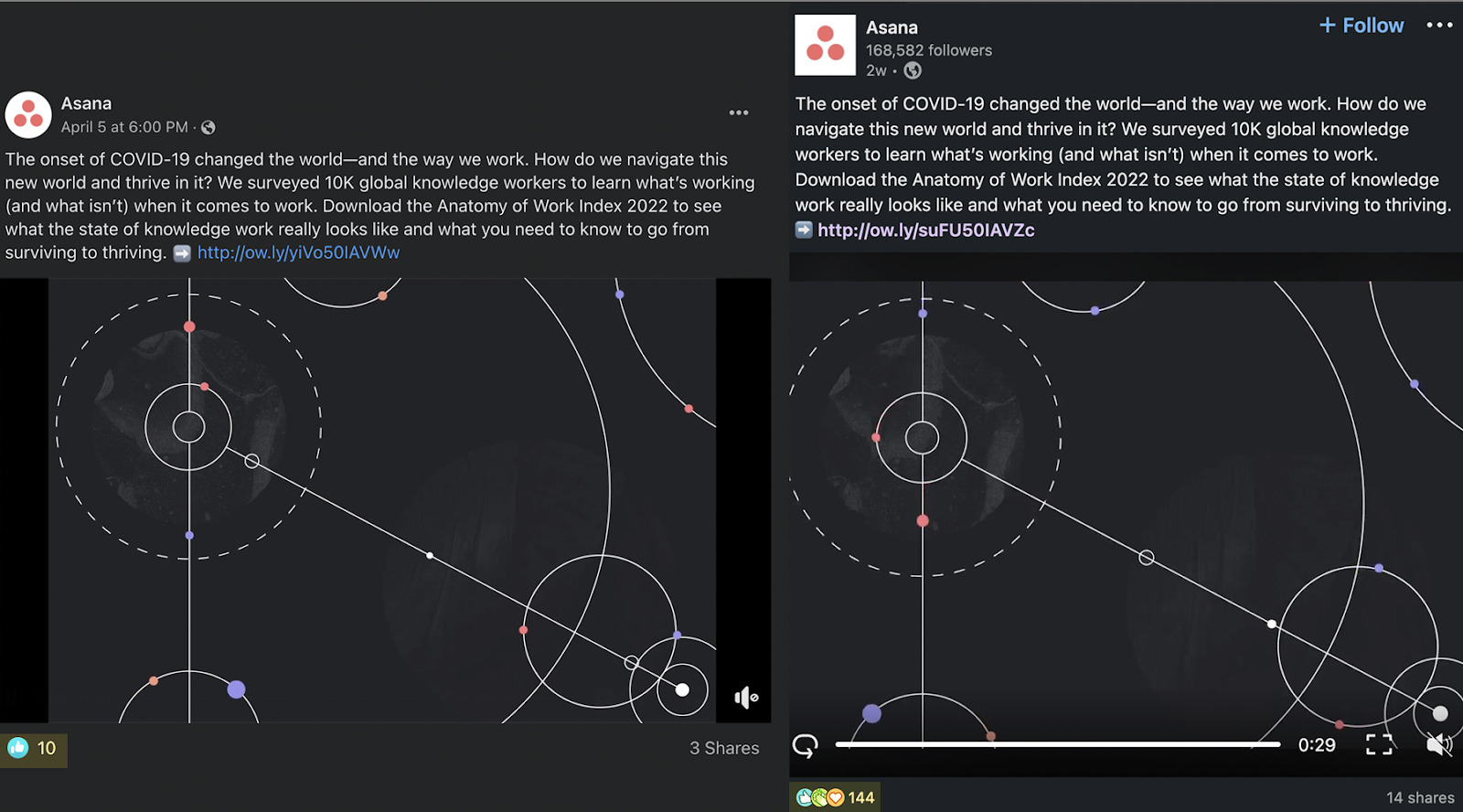
Promote with online ads
Although it will cost you, promoting lead magnets with online ads makes perfect sense.
You and your prospects may be perfect strangers. For now. But well-targeted ads with a lead magnet can change this.
While the ad narrows down your “hunt” from millions to thousands or even hundreds of people, the lead magnet zeros in on the manageable group that is most likely “worth” the time to pitch your product to.
For instance, Microsoft does that all of the time on LinkedIn with its high-ticket products:

Partner up with other companies
This is the last idea on our list. Look for other businesses that target a similar audience but do not compete with you directly.
Then see if they are up for a content collaboration with you. This way, you can pitch to their audience, and they get to pitch to yours.
For example, in 2018, we worked with Buffer, a social media scheduling tool, to create a webinar titled “How to Get Website Traffic With Evergreen Content and Social Media Marketing.”
This makes perfect sense. While the audience was comprised of digital marketers, our products are different enough and do not compete with each other.
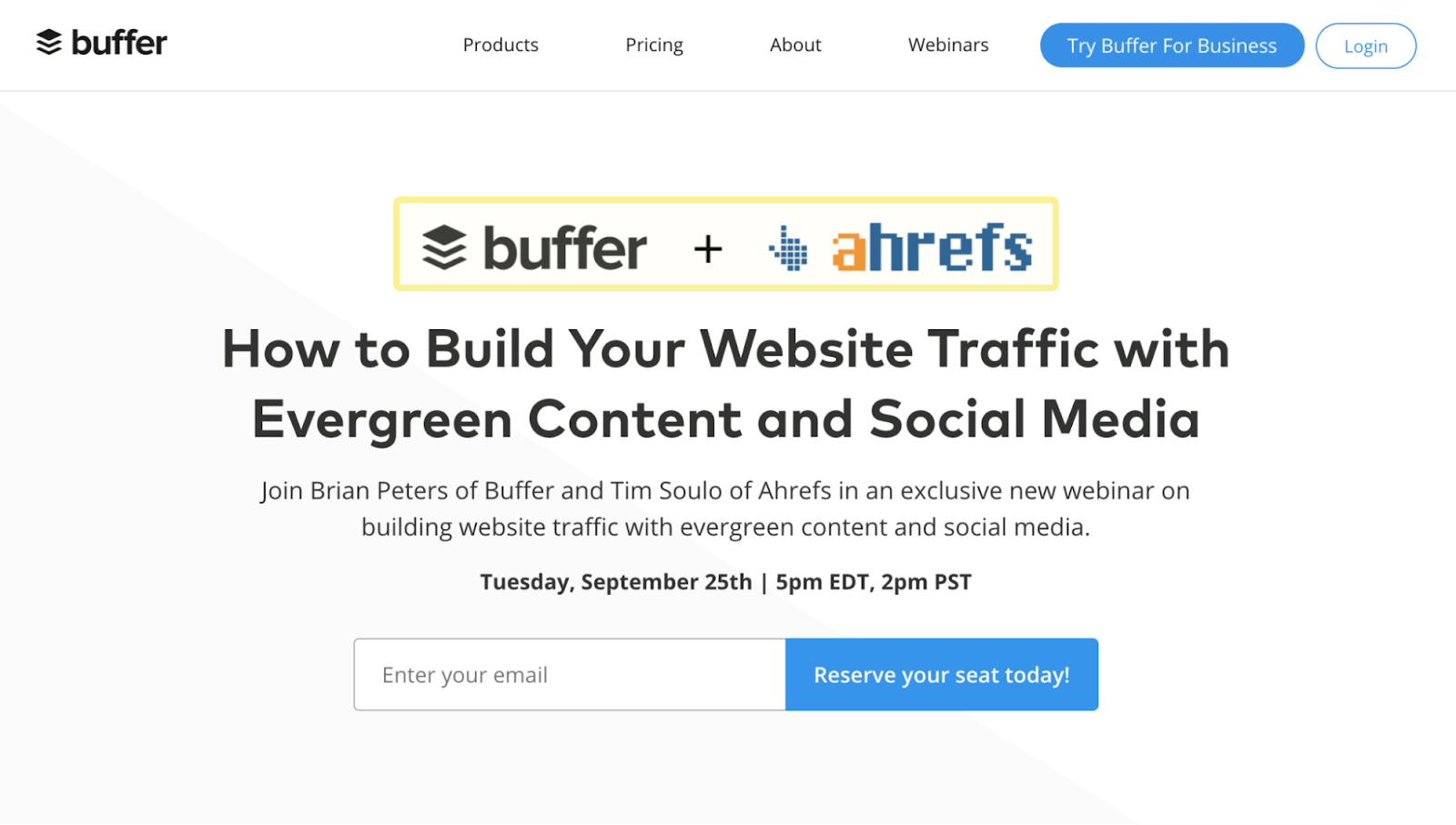
If you want to see how this looks in practice, check out this video:
https://www.youtube.com/watch?v=xn2XCFqREbU
Final thoughts
Lead magnets are a double-edged sword. On the one hand, they can help you get visitors’ contact information. On the other, they can create friction for people who want to access something that could help you sell your products or services.
Are leads more important than getting high volumes of organic traffic and, potentially, more brand awareness? This is a decision you need to make on your own. One solution may be to try and get the best of both worlds by getting your lead magnets search engine optimized (as I’ve explained in this article).
Also, let me add this: From my observations, gated content (at least written content) has become less popular in the last few years. It seems that most companies just prefer not to create this type of friction. This was not the case some five years ago.
Previously, the idea was that if you sold something really unique to a super savvy audience, you’d go with gated content. But now seeing that IBM doesn’t gate its quantum computing case studies, that idea seems to have gone with the wind.
Want to learn more about lead generation? Check these out:
Got questions or comments? Ping me on Twitter.
